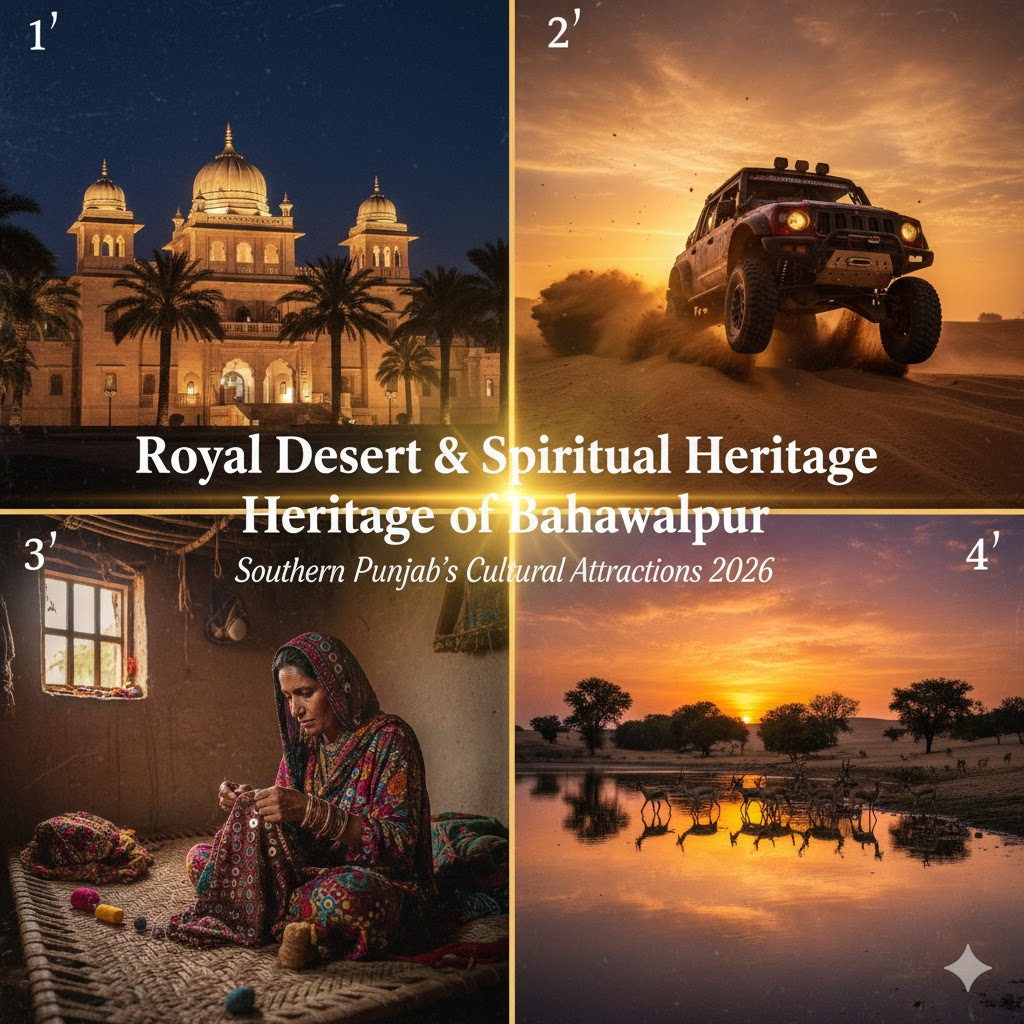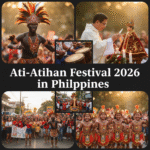Introduction–
Southern Punjab Cultural attractions, often called the heart of Pakistan’s rich culture, is a treasure trove of history, art, and traditions. From majestic forts to lively festivals, this region offers travelers a deep dive into centuries-old heritage and vibrant local life. Whether exploring ancient Sufi shrines, indulging in traditional crafts, or tasting local delicacies, Southern Punjab is a cultural journey waiting to unfold.
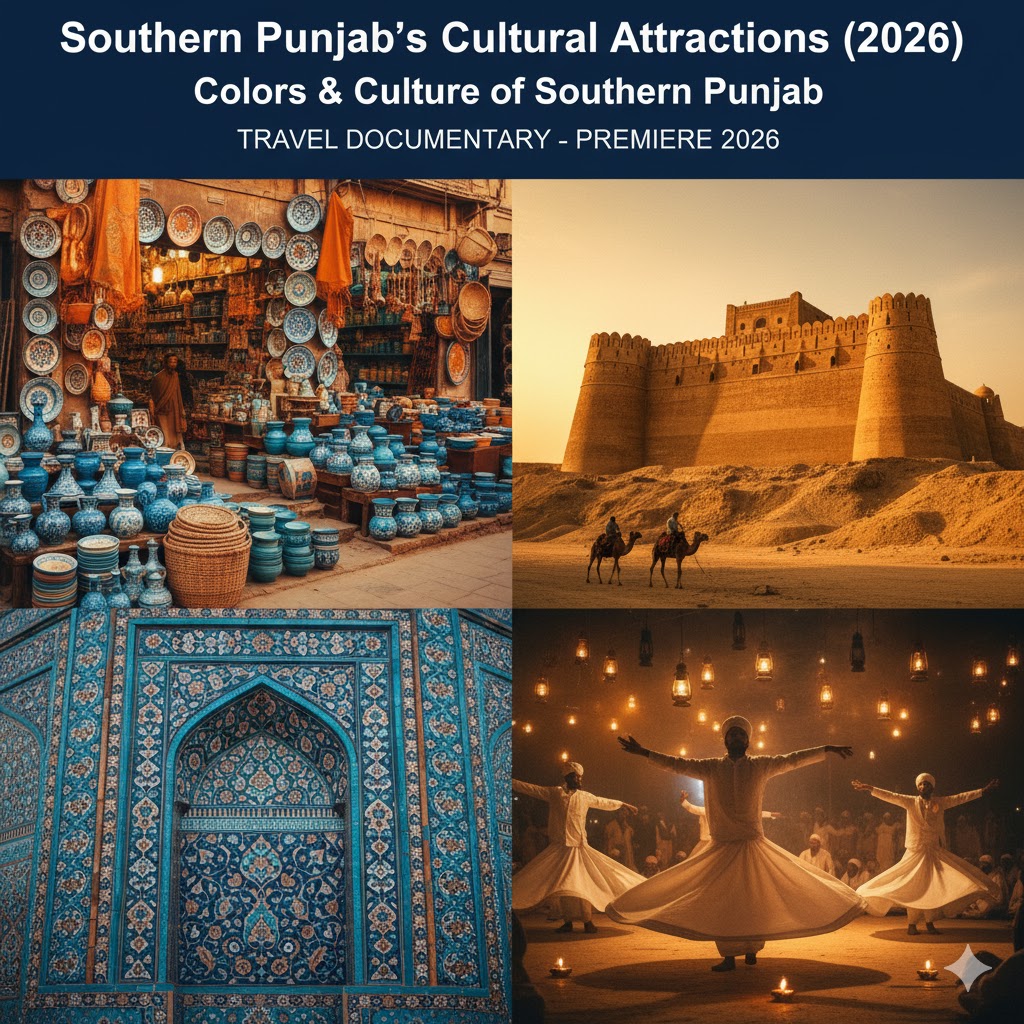
1. Multan – The City of Saints
Multan, known as the City of Saints, is the spiritual heart of Southern Punjab. Famous for its Sufi shrines, Multan offers a serene and mystical atmosphere. Key attractions include:
- Shrine of Bahauddin Zakariya: A 13th-century Sufi saint shrine with intricate blue-tiled architecture. Visitors can witness devotional music and rituals.
- Shrine of Shah Rukn-e-Alam: Another spiritual landmark with grand architecture and historical significance.
- Multan Fort: Though partially in ruins, the fort narrates tales of past empires and offers panoramic city views.
Hidden Gems: Local bazaars near the shrines where artisans sell pottery, embroidered fabrics, and camel leather products.
Local Tips: Early mornings are best for visiting shrines to avoid crowds and enjoy spiritual chanting.
Access Info: Multan is well-connected by road, rail, and air; rickshaws and taxis are convenient for city travel.
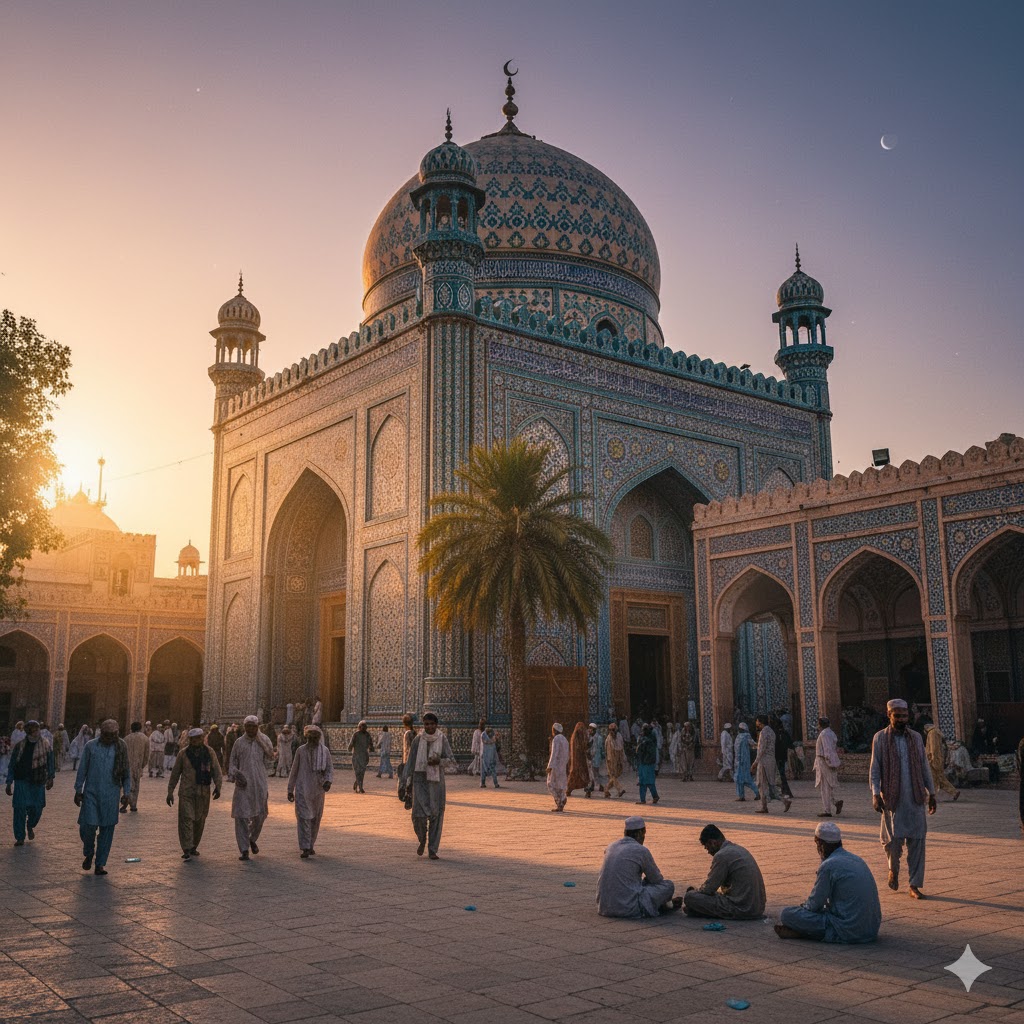
2. Uch Sharif – Historic Islamic Architecture
Uch Sharif is a small town with immense historical significance. Renowned for its medieval Islamic architecture, the town is home to several UNESCO-style heritage monuments.
- Tomb of Hazrat Jalaluddin Bukhari: Famous for its ornate tile work and spiritual legacy.
- Tomb of Sheikh Rukn-e-Alam’s Followers: Showcases intricate brick patterns and decorative calligraphy.
- Chowk Bazaar: Traditional marketplace reflecting local life and crafts.
Hidden Gems: Explore narrow alleys with centuries-old homes built in traditional Multani style.
Local Tips: Hire a local guide to understand the history and symbolism of the tombs.
Access Info: Located about 35 km from Bahawalpur, reachable via local buses or private vehicles.
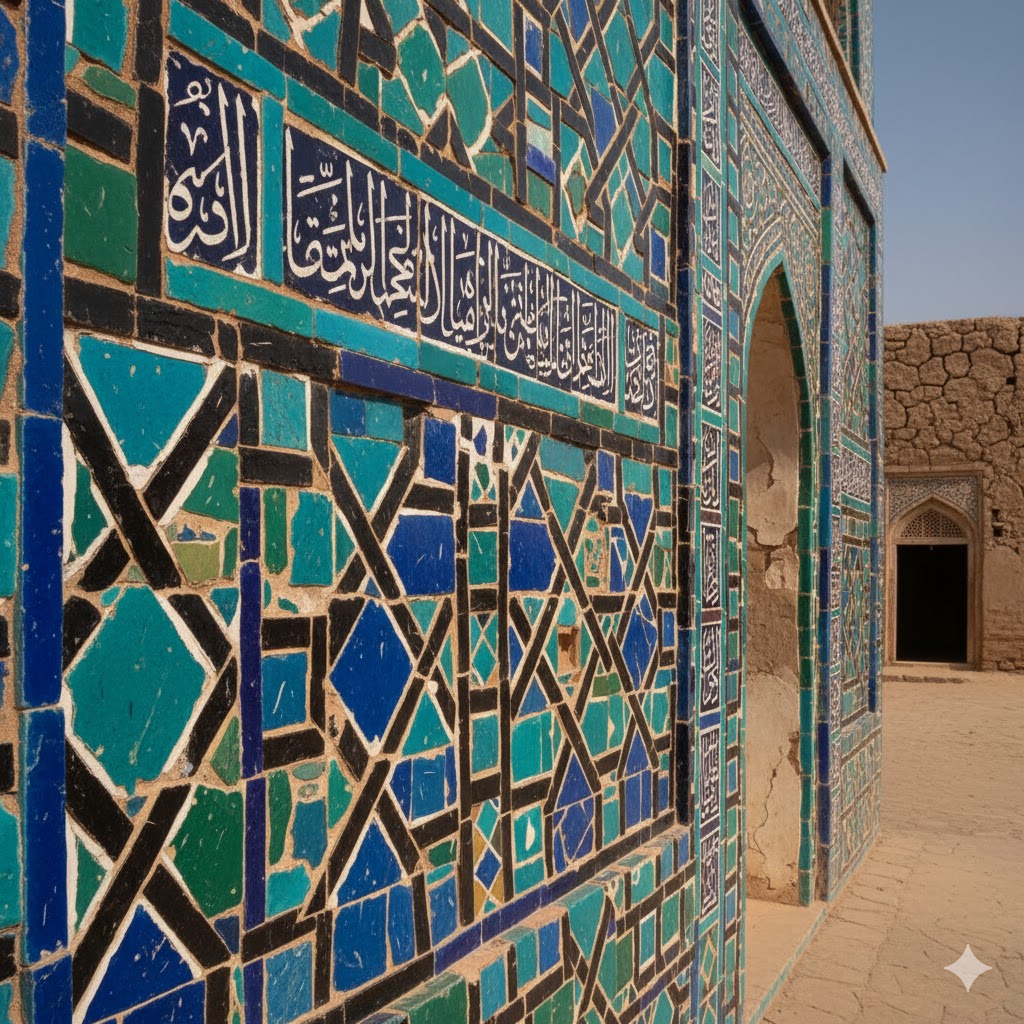
3. Bahawalpur – Royal Heritage & Desert Charm
Bahawalpur is known for its royal palaces, lush gardens, and proximity to the Cholistan Desert. Key attractions include:
- Noor Mahal: A stunning 19th-century palace with Italian architectural influences, now open for tours.
- Derawar Fort: Located in Cholistan Desert, this imposing fort features 40 bastions and offers spectacular desert views.
- Bahawalpur Museum: Houses archaeological artifacts, including coins, pottery, and traditional costumes.
Hidden Gems: Desert safaris in Cholistan during camel festivals offer immersive cultural experiences.
Local Tips: Visit Derawar Fort at sunrise or sunset for breathtaking photography opportunities.
Access Info: Bahawalpur has an airport, and road connectivity is excellent; desert tours are available via local operators.
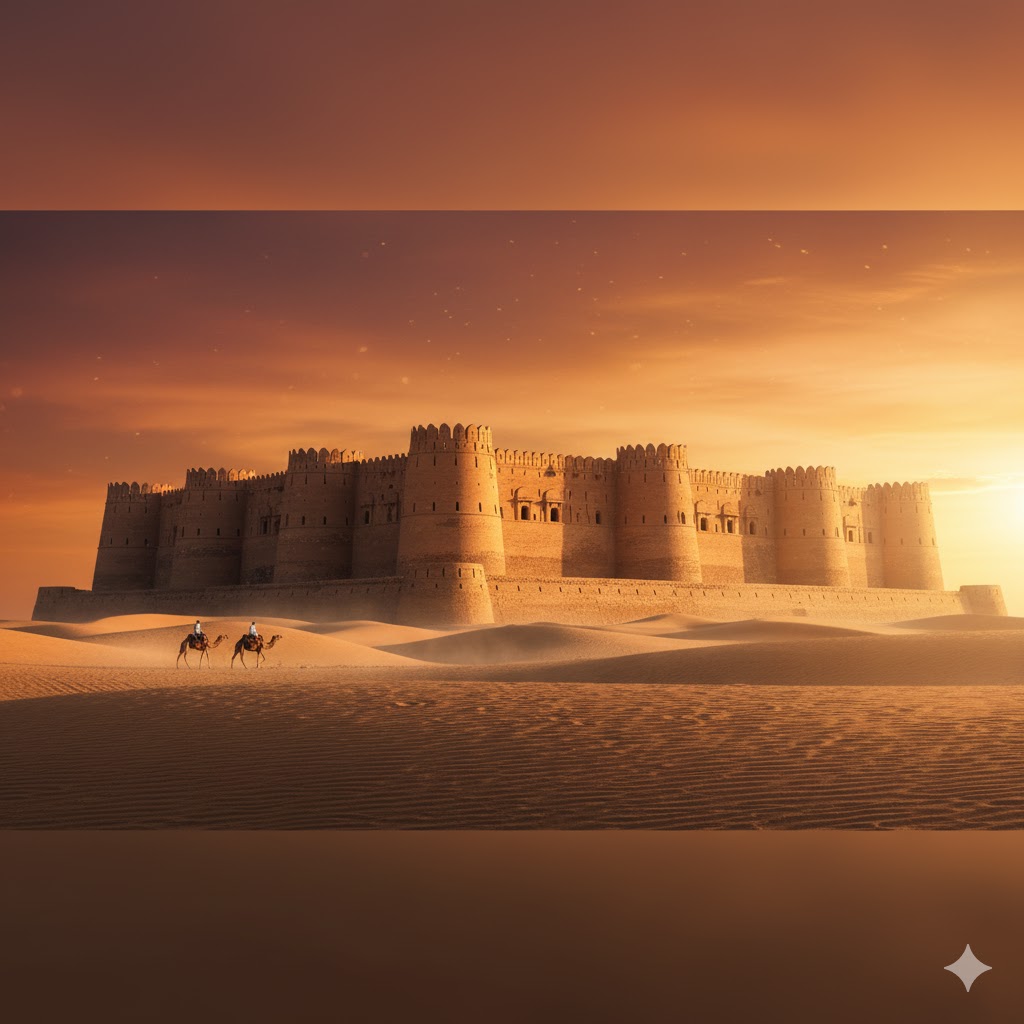
4. Festivals of Southern Punjab – Spiritual Rhythms & Folk Celebrations
Southern Punjab’s cultural essence truly comes alive through its festivals — a colorful blend of spirituality, music, and folk traditions that unite communities and travelers alike.
Urs of Shah Rukn-e-Alam (Multan)
The Urs festival at the shrine of Shah Rukn-e-Alam is one of the most spiritually charged events in the region. Devotees from across Pakistan gather to honor the saint through Sufi music, Qawwali, and traditional rituals. The entire shrine glows under soft lights as mystics and visitors immerse in rhythmic chants, symbolizing unity and peace.
Cultural Origin: Commemorates the death anniversary of the revered Sufi saint Shah Rukn-e-Alam.
Highlights: Qawwali nights, candlelit vigils, and the distribution of langar (free meals).
Local Tips: Dress modestly and carry a scarf; early evening is the best time to visit to witness devotional music.
Access Info: Easily accessible from Multan city center by rickshaw or cab.
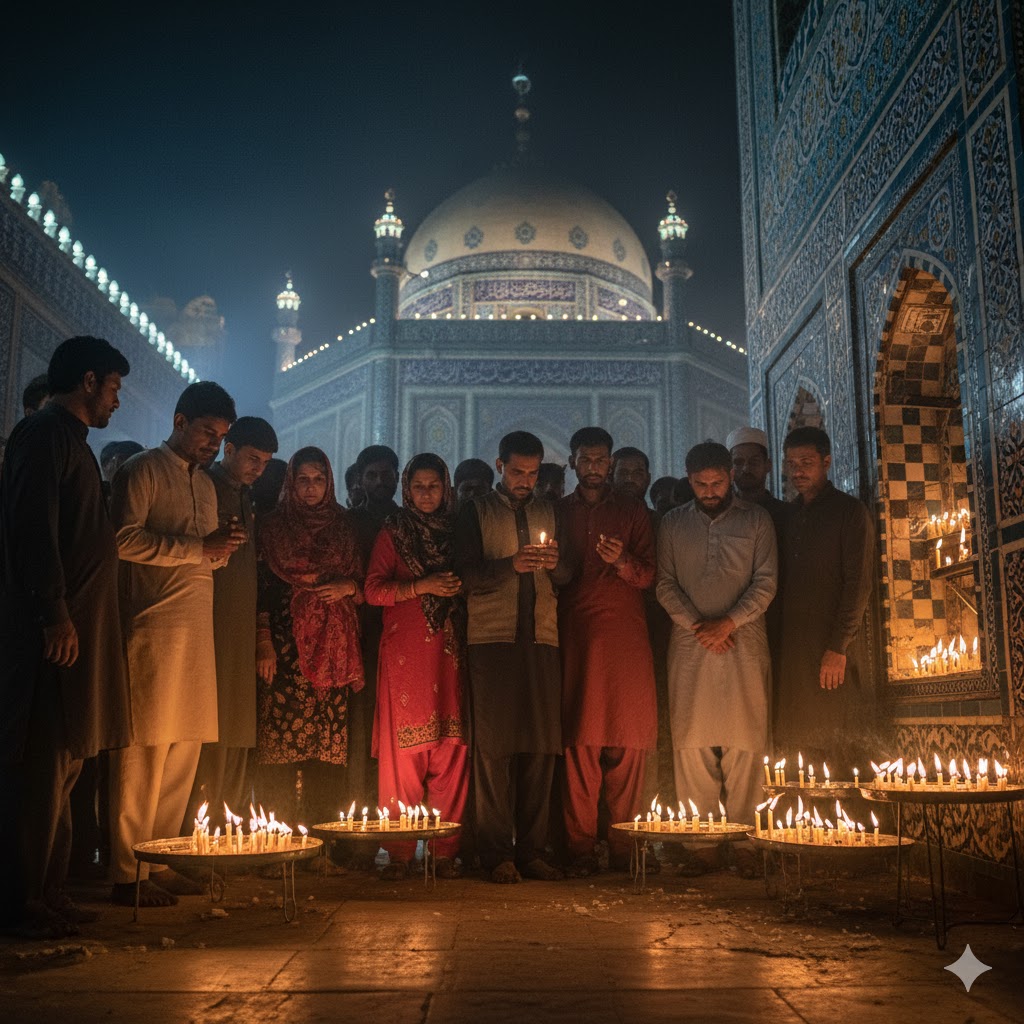
Cholistan Desert Jeep Rally (Bahawalpur)
A fusion of adventure and culture, the Cholistan Jeep Rally showcases the rugged charm of Southern Punjab’s desert region. Beyond the adrenaline rush of racing, the event celebrates local folklore, camel dances, and desert music performed under starry skies.
Cultural Origin: Started as a local motorsport event to promote tourism and desert heritage.
Highlights: Jeep races across dunes, cultural night shows, handicraft stalls, and camel races.
Hidden Gems: Local artisans selling handcrafted camel leather goods and desert jewelry.
Local Tips: Book accommodations in Bahawalpur early; wear sun-protective gear and carry water.
Ticket Info: Entry for spectators is usually free; VIP passes are available through the Tourism Development Corporation of Punjab (TDCP).
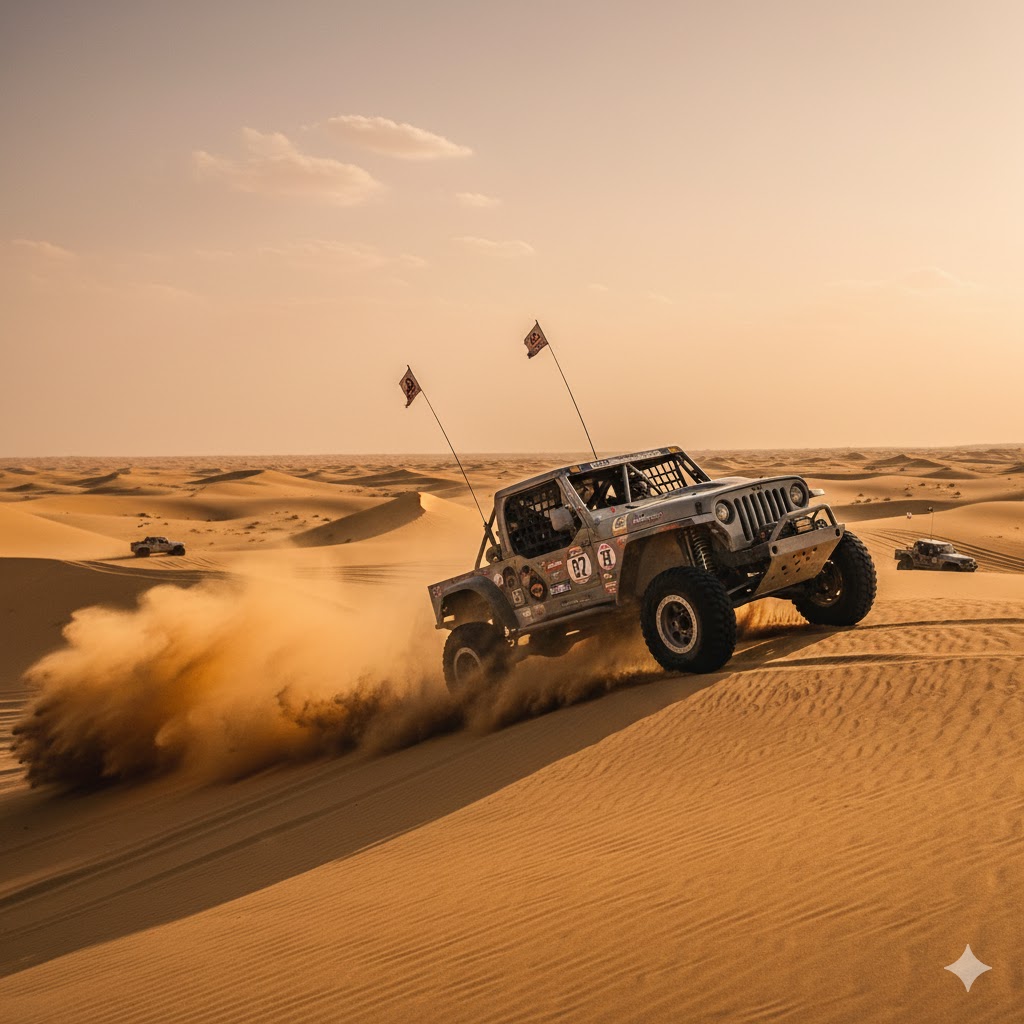
Sufi Music Festival – Spirit of Devotion
Held across different cities including Multan and Bahawalpur, the Sufi Music Festival brings together Qawwals, folk singers, and poets from all over the country. The atmosphere turns magical as traditional instruments like the harmonium, tabla, and dholak echo through ancient courtyards.
Cultural Origin: Rooted in Sufi traditions of love and divine connection through music.
Highlights: Live performances, poetry recitations, and cultural workshops.
Hidden Gems: Intimate late-night sessions in shrines where local singers perform unplugged Qawwalis.
Local Tips: Bring a shawl; nights can get cool, especially in outdoor venues.
Access Info: Multan Arts Council and Bahawalpur’s Darbar Halls are the main venues.
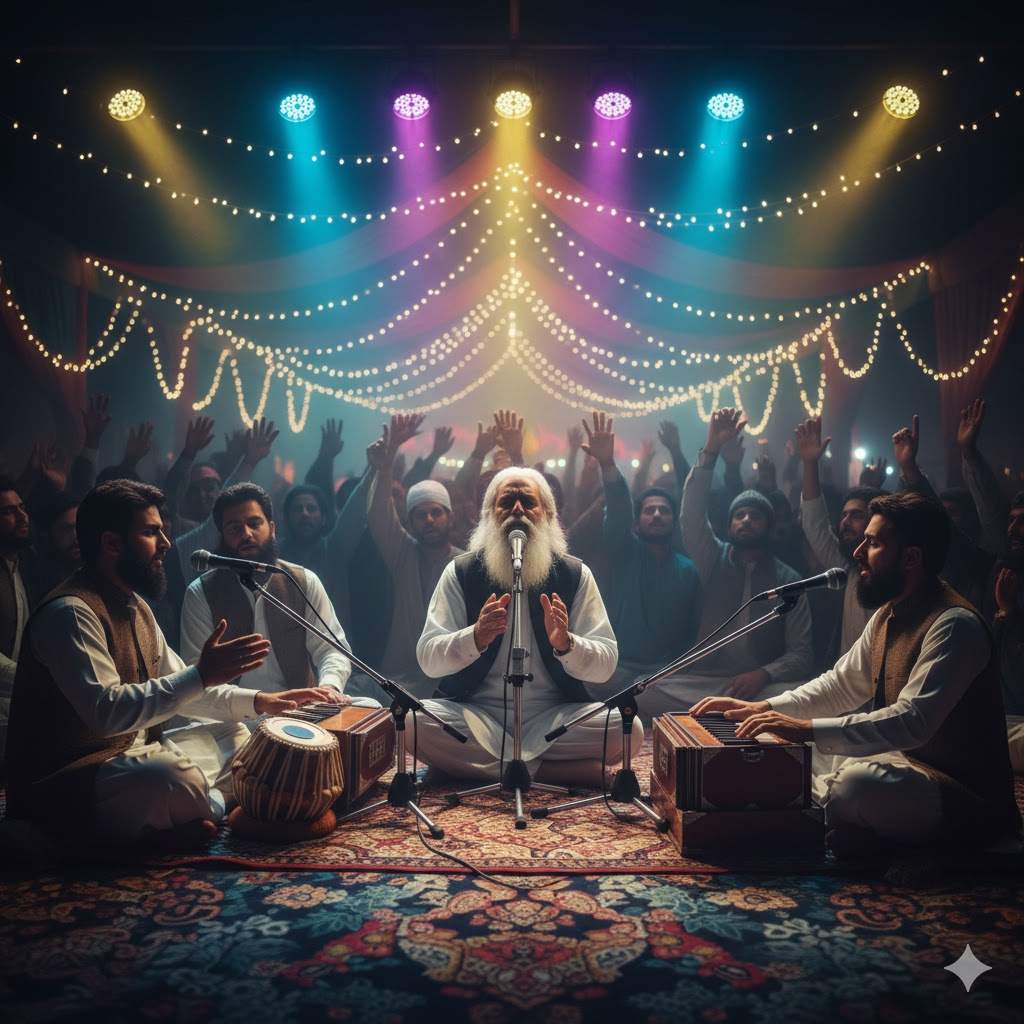
5. Local Crafts & Artisans – Heritage in Hands
Southern Punjab’s craftsmanship reflects centuries of tradition. From blue pottery to camel-leather embroidery, each craft tells a story of cultural pride and creativity.
Multani Blue Pottery
A world-renowned art form, Multani blue pottery uses cobalt blue and white patterns inspired by Persian motifs. Artisans handcraft each piece — from vases to tiles — using natural dyes and ancient firing techniques.
Hidden Gems: Visit small workshops near Hussain Agahi Bazaar to see artisans at work.
Local Tips: Bargain politely; authentic handmade items often have minor imperfections that add to their charm.
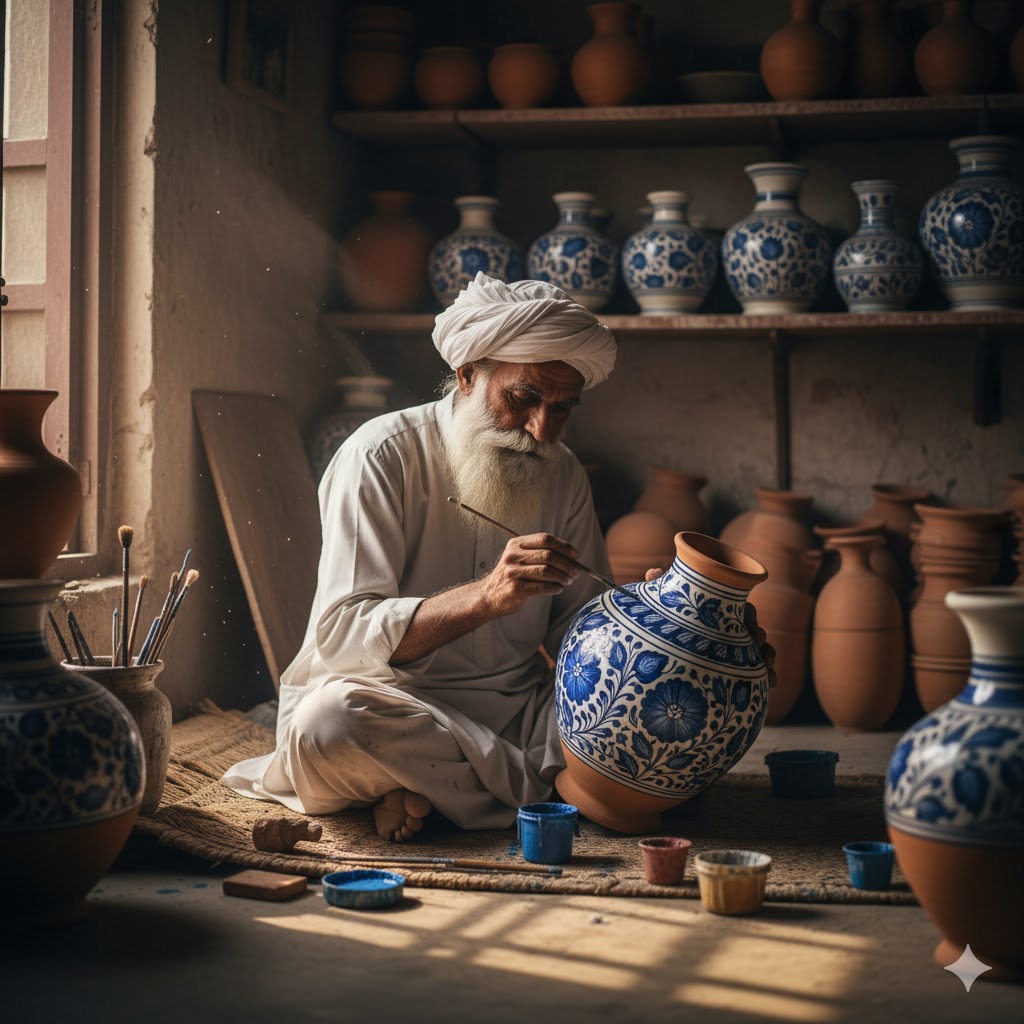
Camel Leather Crafts (Bahawalpur)
Camel leather from the Cholistan region is known for its durability and natural texture. Local craftsmen use it to make belts, wallets, bags, and home décor items adorned with ethnic embroidery.
Cultural Significance: The craft dates back to desert nomads who utilized camel hides for practical and artistic purposes.
Hidden Gems: Small stalls near Derawar Fort often sell limited-edition, handmade leather accessories.
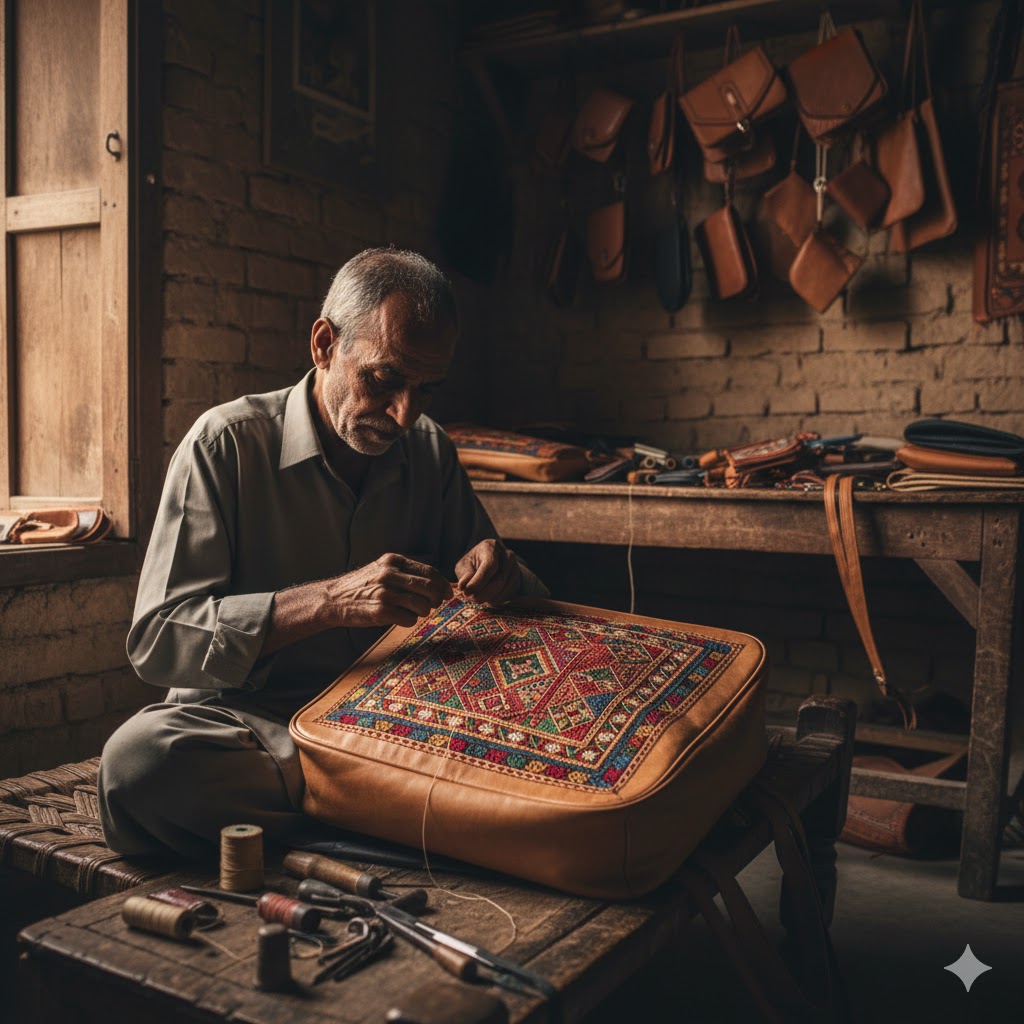
Cholistani Embroidery & Mirror Work
In villages surrounding Bahawalpur and Rahim Yar Khan, women artisans create intricate embroidered fabrics decorated with mirrors, beads, and geometric designs. These are often used in bridal dresses and wall hangings.
Local Tips: The best pieces can be found at women’s cooperative stalls during festivals or craft fairs.
Cultural Note: Each color and stitch pattern symbolizes a tribal story or emotion.
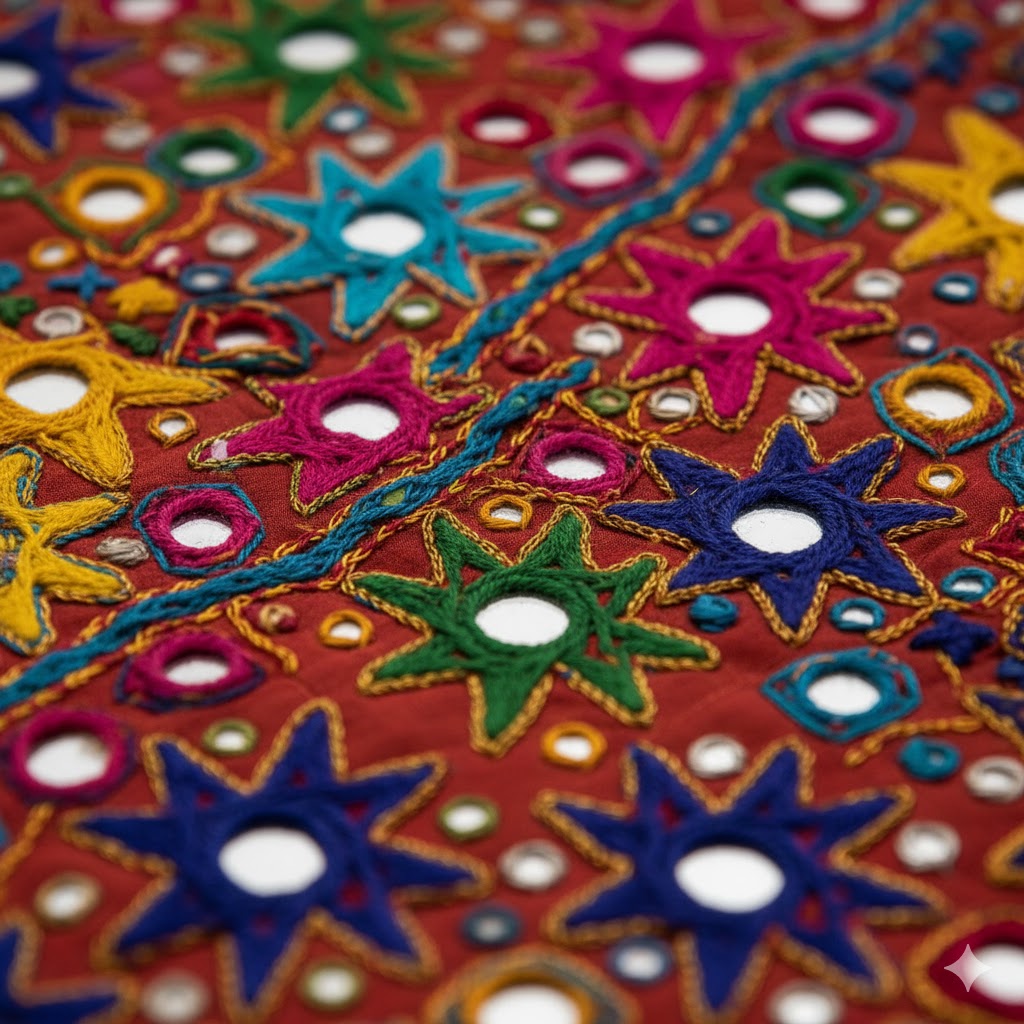
6. Cuisine of Southern Punjab – A Taste of Heritage
No cultural exploration is complete without savoring the region’s culinary delights. Southern Punjab’s cuisine combines spice, aroma, and slow-cooked richness.
Sohan Halwa (Multan)
Multan’s Sohan Halwa is a sweet legacy made from wheat, ghee, and sugar syrup cooked to perfection. Its chewy texture and nutty flavor make it a must-try souvenir for every traveler.
Hidden Gems: Hafiz Sohan Halwa in Multan’s Ghanta Ghar area — the oldest shop preserving the original recipe.
Local Tips: Always check packaging for the “authentic Multani Halwa” seal before purchase.
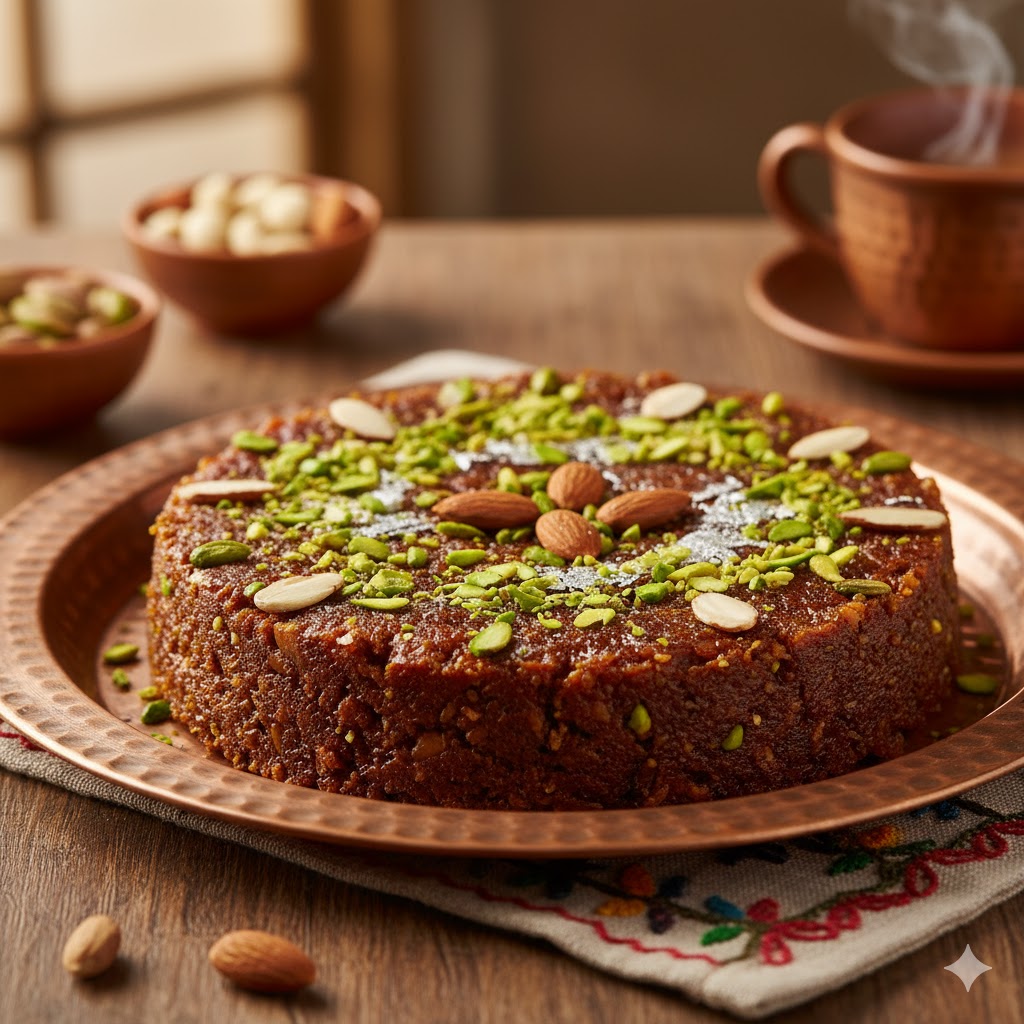
Siri Paye & Cholistan BBQ
Rural Punjab’s love for hearty meals shines through dishes like Siri Paye (slow-cooked trotters) and Cholistan BBQ — grilled meat seasoned with indigenous spices. These dishes are popular during desert festivals and roadside dhabas.
Local Tips: Best enjoyed early morning or during late-night roadside stops. Pair with local lassi for a full meal.
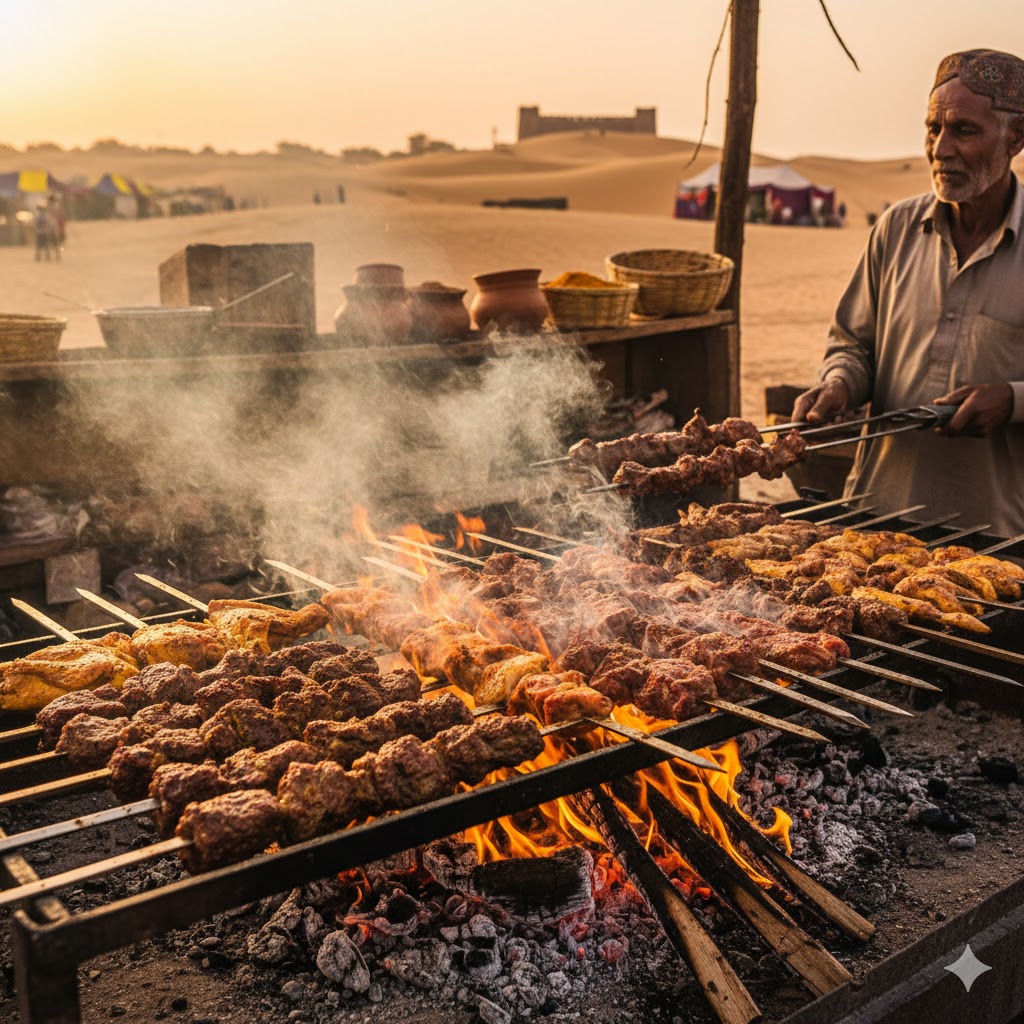
Cholistani Tea & Desert Cuisine
Nomadic herders in the Cholistan Desert brew strong black tea with cardamom and salt — a unique taste reflecting desert resilience. Accompanied by millet bread and dates, this simple meal symbolizes hospitality and endurance.
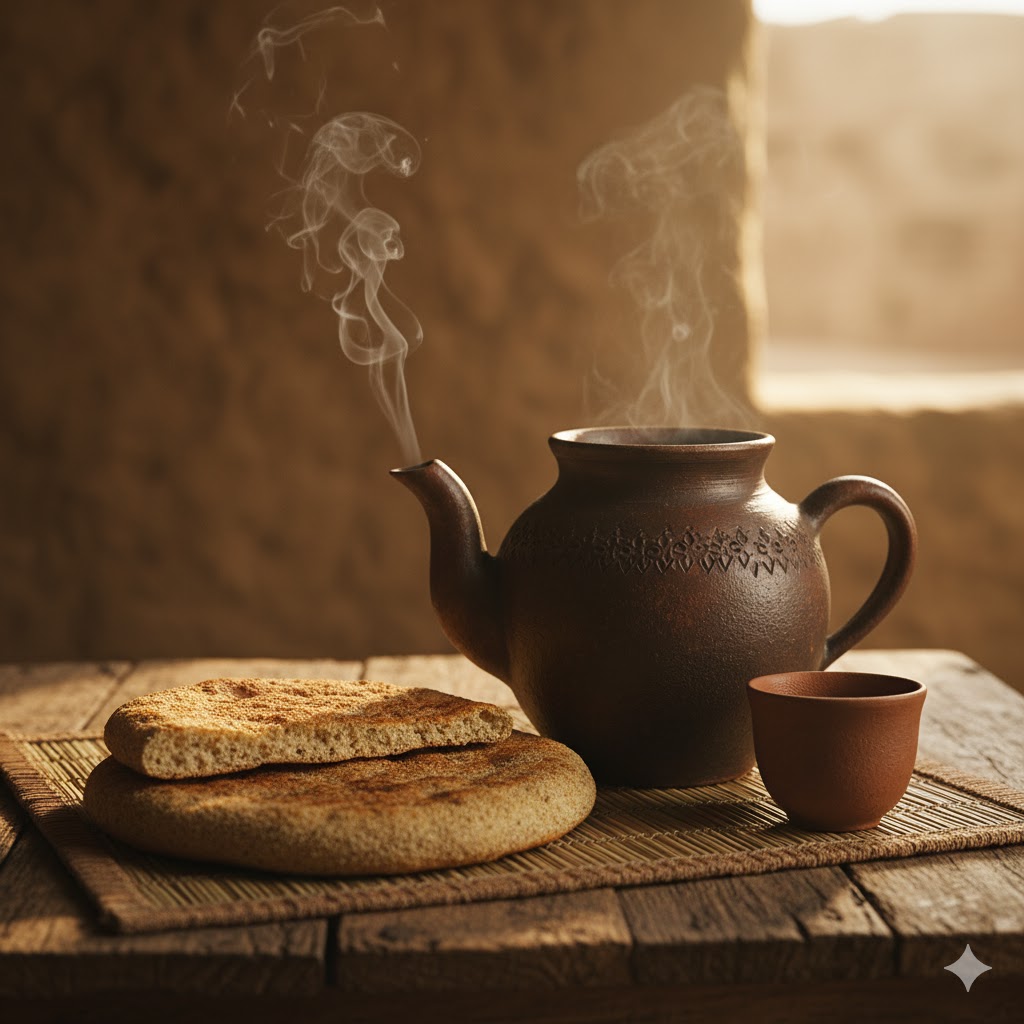
7. Hidden Heritage Villages & Eco Attractions
Southern Punjab isn’t just about cities and shrines — it hides tranquil villages, eco parks, and lesser-known archaeological treasures.
Fort Abbas & Ancient Trade Routes
Located near the India-Pakistan border, Fort Abbas is a lesser-visited historical fort with crumbling walls that once guarded desert caravans. It marks the southern edge of the Cholistan Desert.
Local Tips: Bring binoculars to enjoy stunning sunrise views over the desert plains.
Access Info: Reachable by road from Bahawalpur (approximately 2.5 hours).
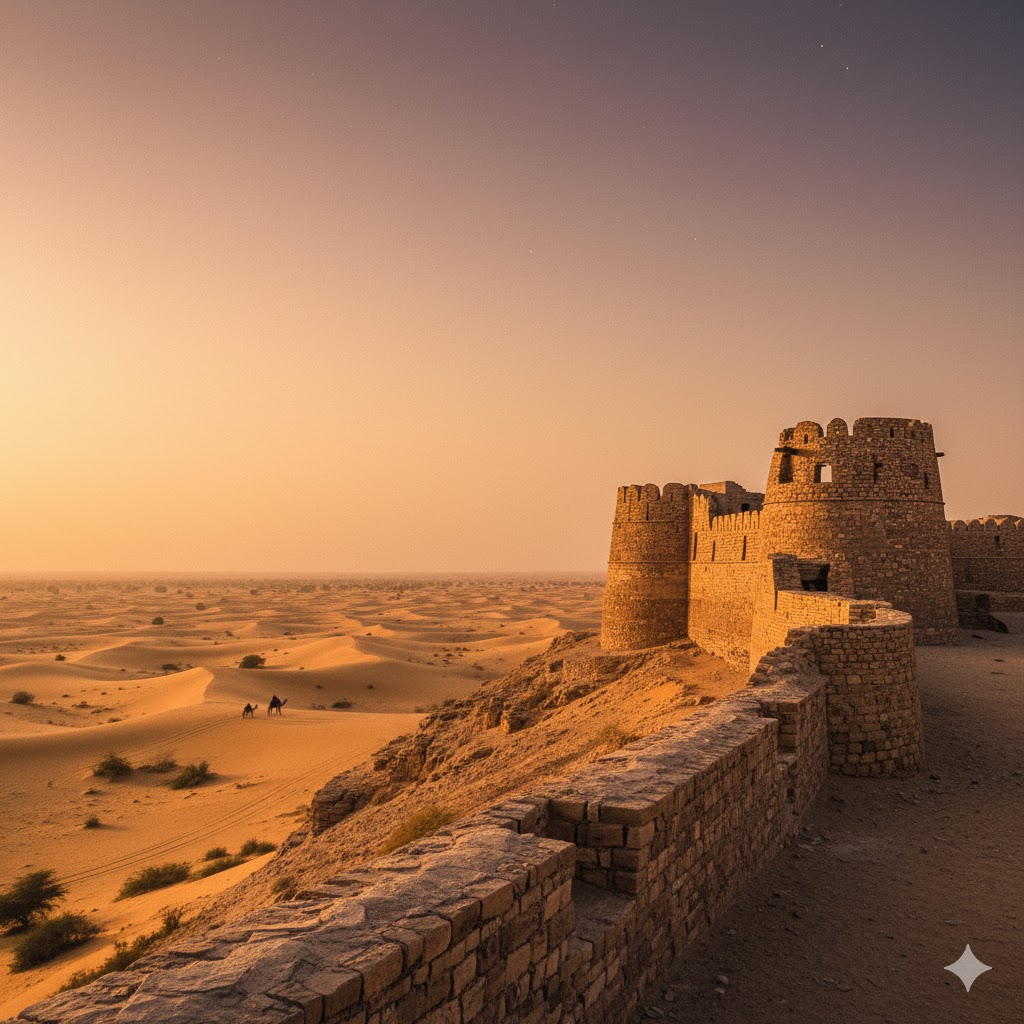
Lal Suhanra National Park (Bahawalpur)
One of Asia’s largest biosphere reserves, Lal Suhanra is a blend of desert, forest, and wetland ecosystems. It’s home to blackbuck, deer, and migratory birds, making it ideal for eco-tourism and photography.
Hidden Gems: The park’s lake area at dawn offers mesmerizing reflections and birdwatching opportunities.
Local Tips: Safari rides and camping are available through official guides only.
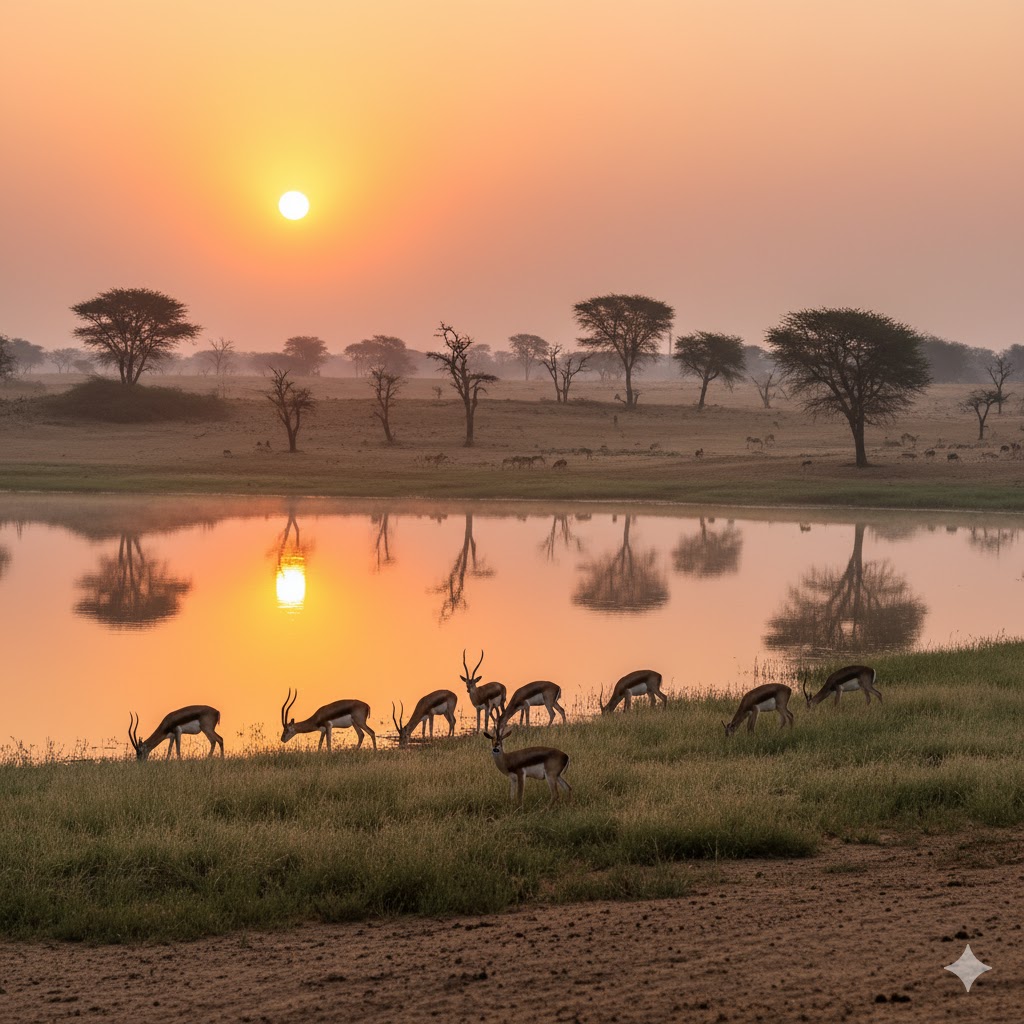
Head Punjnad – The Confluence of Rivers
Head Punjnad, where five rivers of Punjab merge, symbolizes the unity of the province. It’s a popular picnic spot offering boat rides, lush surroundings, and fresh river fish cuisine.
Access Info: Located about 20 km from Uch Sharif; ideal for a day trip.
Local Tips: Visit in spring when water levels are moderate and views are clearest.
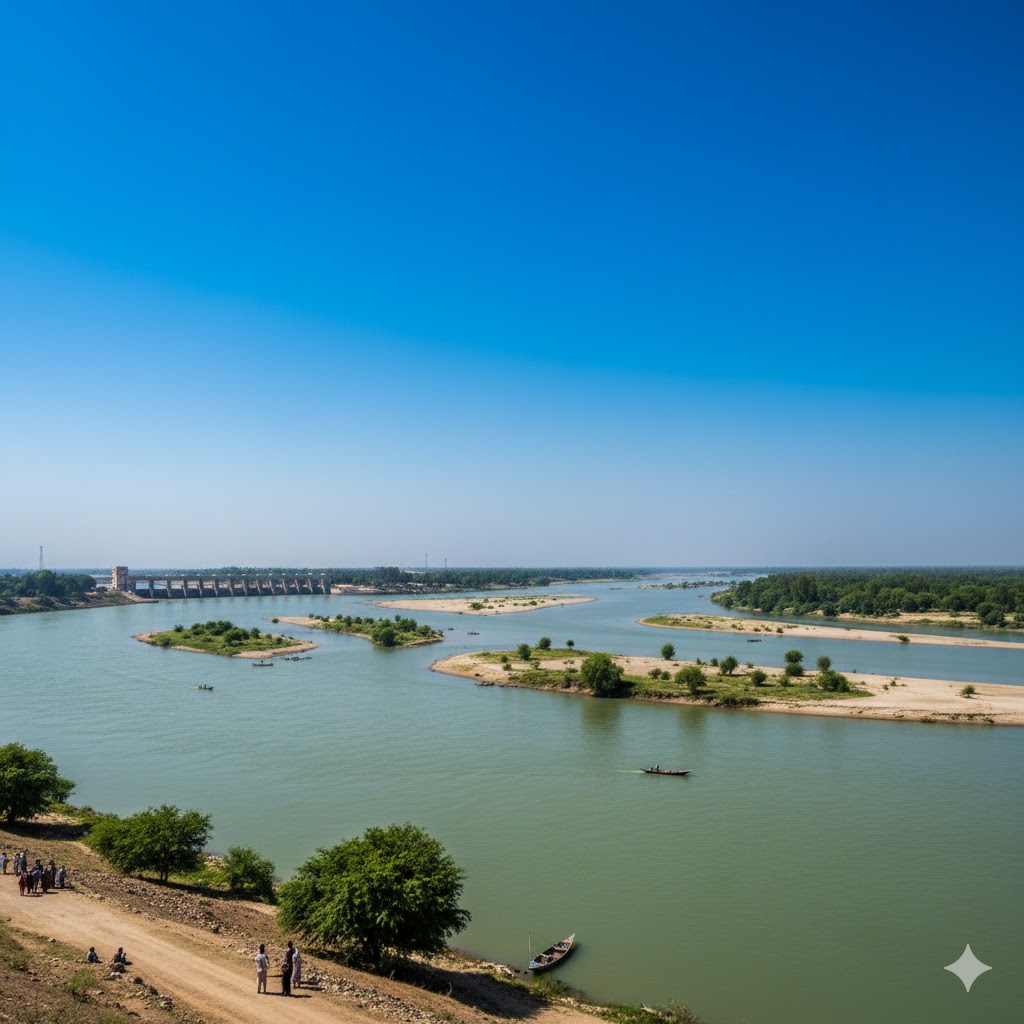
8. Cultural Etiquette & Travel Tips – Respecting Local Traditions
Understanding local customs in Southern Punjab not only enriches your journey but also fosters respect between travelers and residents. This region is deeply rooted in Sufi spirituality and traditional hospitality, so a few thoughtful gestures go a long way.
Dress & Behavior
Southern Punjab values modest dressing — light, breathable cotton or lawn fabrics are ideal. Women travelers are advised to carry scarves, especially when visiting shrines or rural villages. Always remove shoes before entering any religious site.
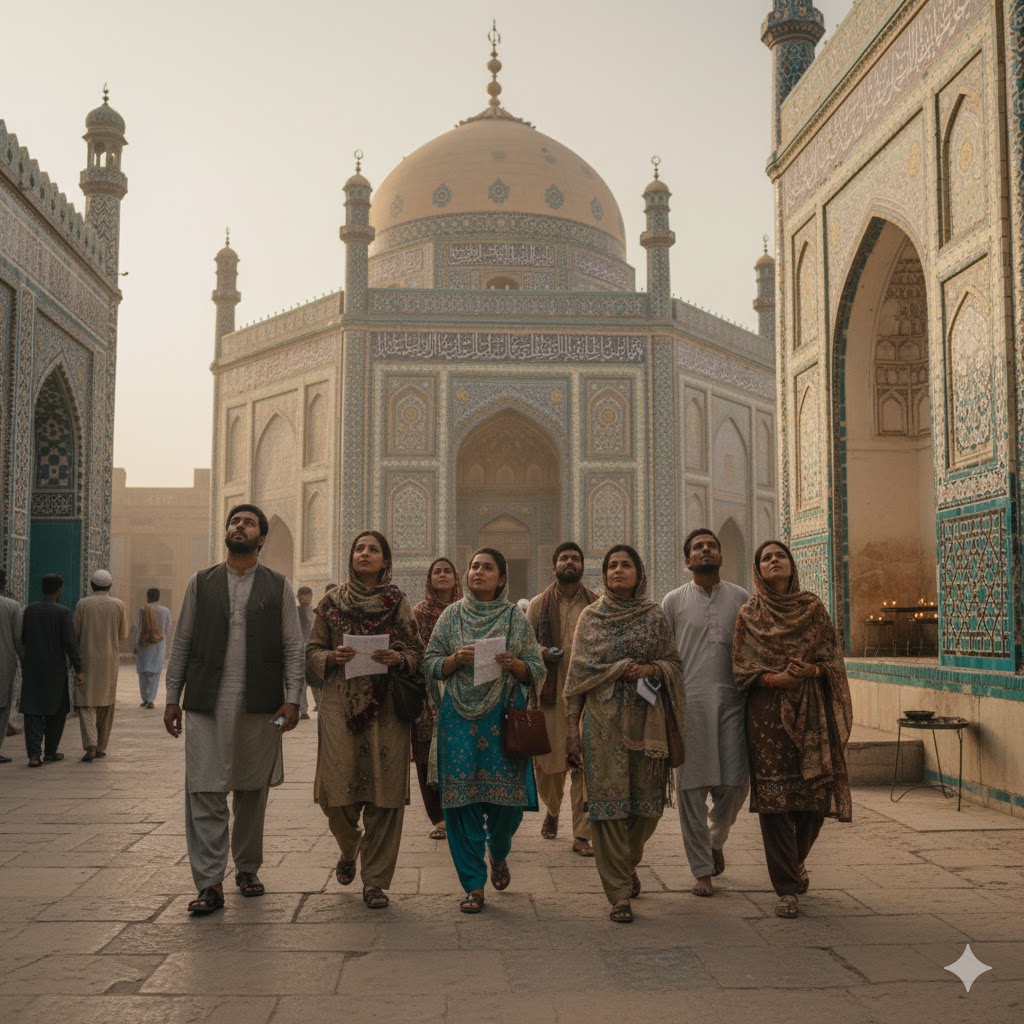
Photography Etiquette
Photography is generally welcomed, but always ask permission before capturing locals, particularly women or artisans at work. During religious festivals, avoid flash photography near prayer areas.
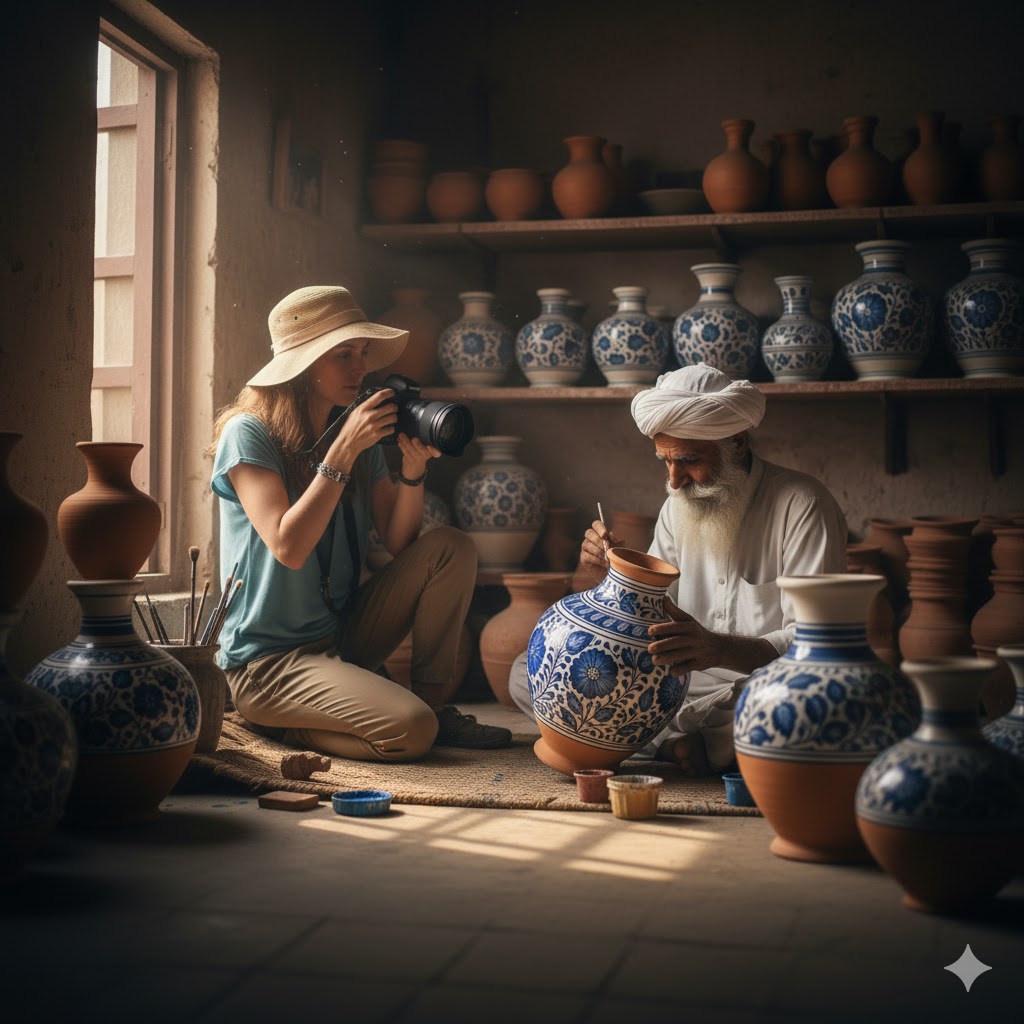
Local Interaction & Language
Urdu is widely spoken, though Saraiki and Punjabi dominate local dialects. A simple greeting — “Assalam-o-Alaikum” — earns instant warmth. Locals often offer tea as a sign of friendship; accepting it shows mutual respect.
Hidden Gem Tip: Visit small tea stalls in Multan or Uch Sharif to engage with locals and hear fascinating folklore about saints and ancient trade caravans.
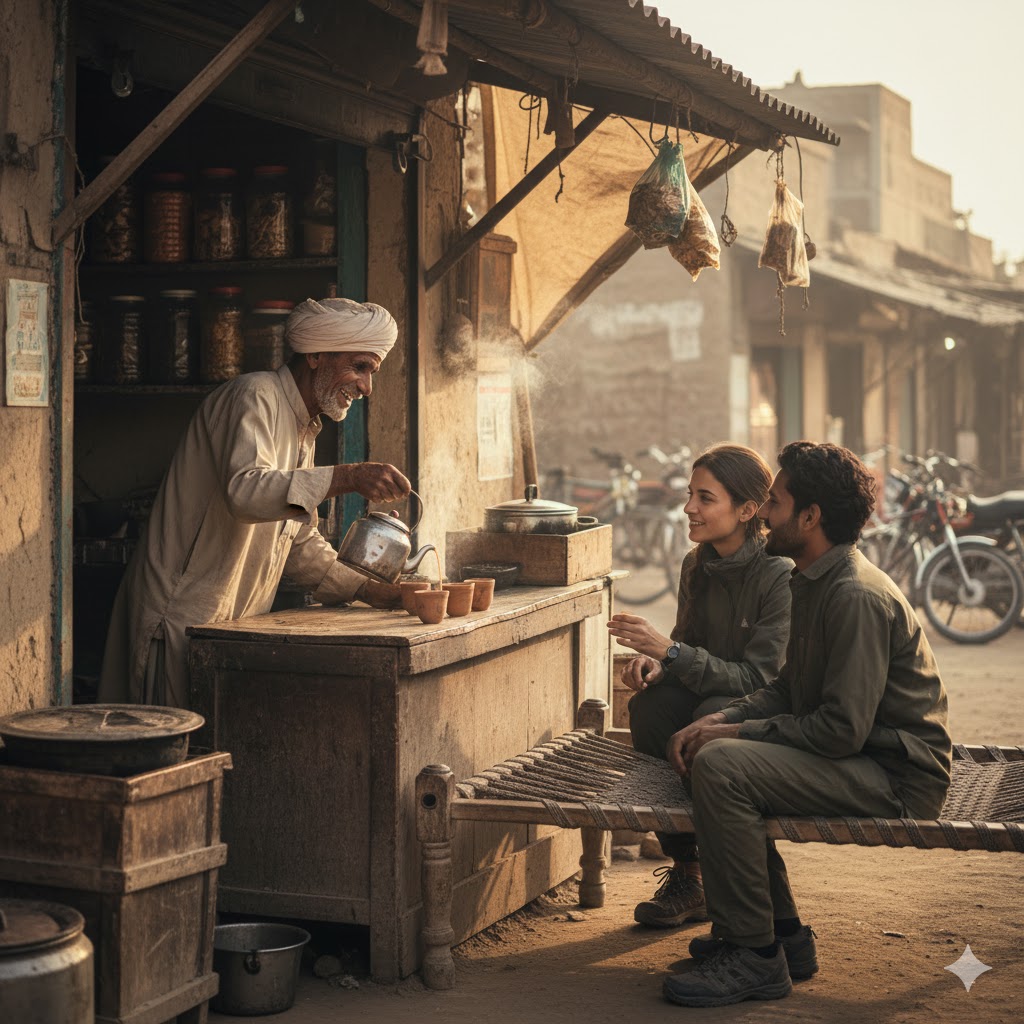
Safety & Travel Advisory
Southern Punjab is generally safe for travelers, but rural areas may have limited medical facilities. Keep your travel documents and emergency contacts handy. Travel insurance covering desert activities is recommended for Cholistan safaris.
9. Where to Stay – Comfort with Heritage Charm
Southern Punjab offers a variety of accommodations, ranging from heritage mansions to eco-lodges near the desert. Whether you prefer royal architecture or rustic simplicity, the region ensures an authentic cultural stay.
Bahawalpur Heritage Hotels
- Noor Mahal Guest Wing: Offers luxury stays inside the restored Noor Mahal complex.
- Lal Suhanra Resort: Perfect for eco-tourists and wildlife enthusiasts.
- TDCP Cholistan Camp: Government-operated desert camp with tents and evening bonfire activities.
Local Tips: Book early during the Cholistan Jeep Rally or major Sufi festivals; rooms fill fast.
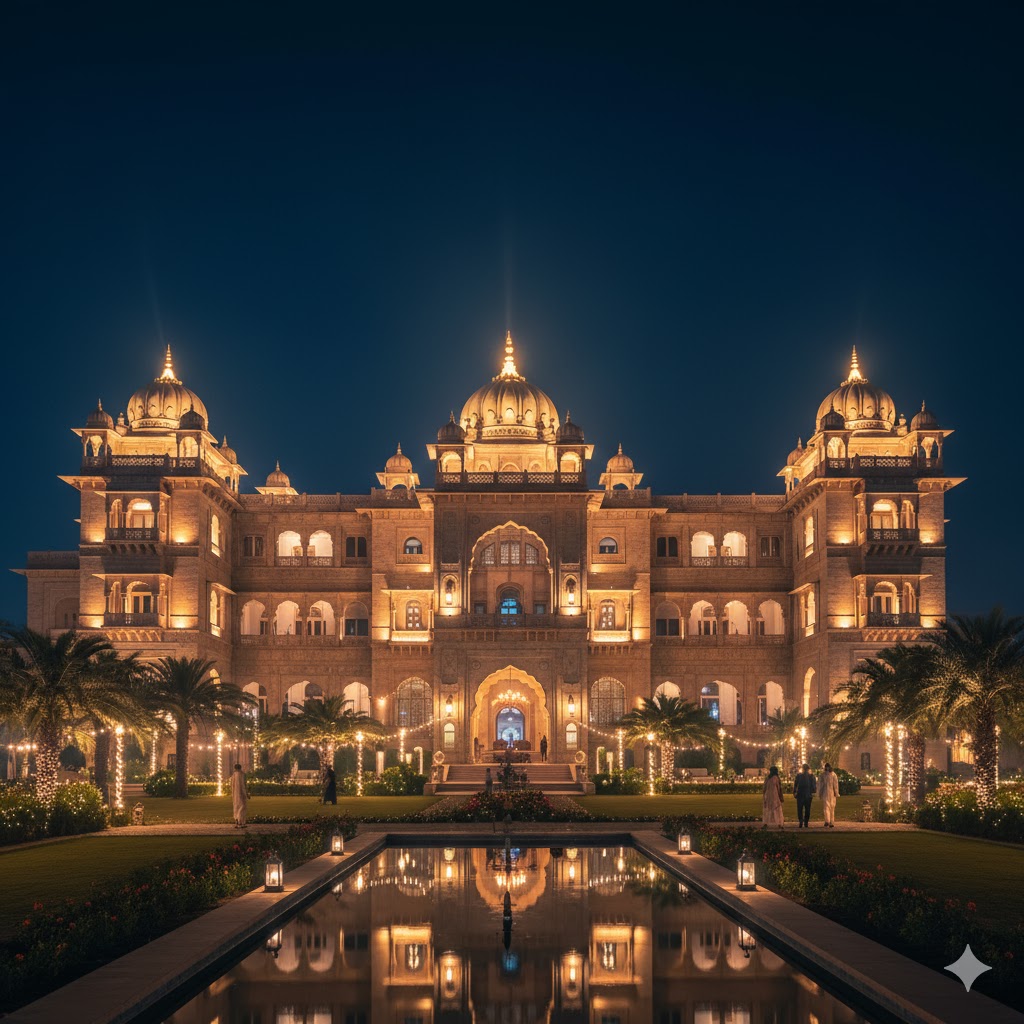
Multan Boutique Stays
- Hotel One Multan: A modern option with close proximity to shrines and bazaars.
- Muzafar Inn: Offers budget-friendly comfort with panoramic views of Multan Fort.
Hidden Gems: Some family-run guesthouses near Shah Rukn-e-Alam shrine offer homemade breakfast and folklore storytelling sessions.
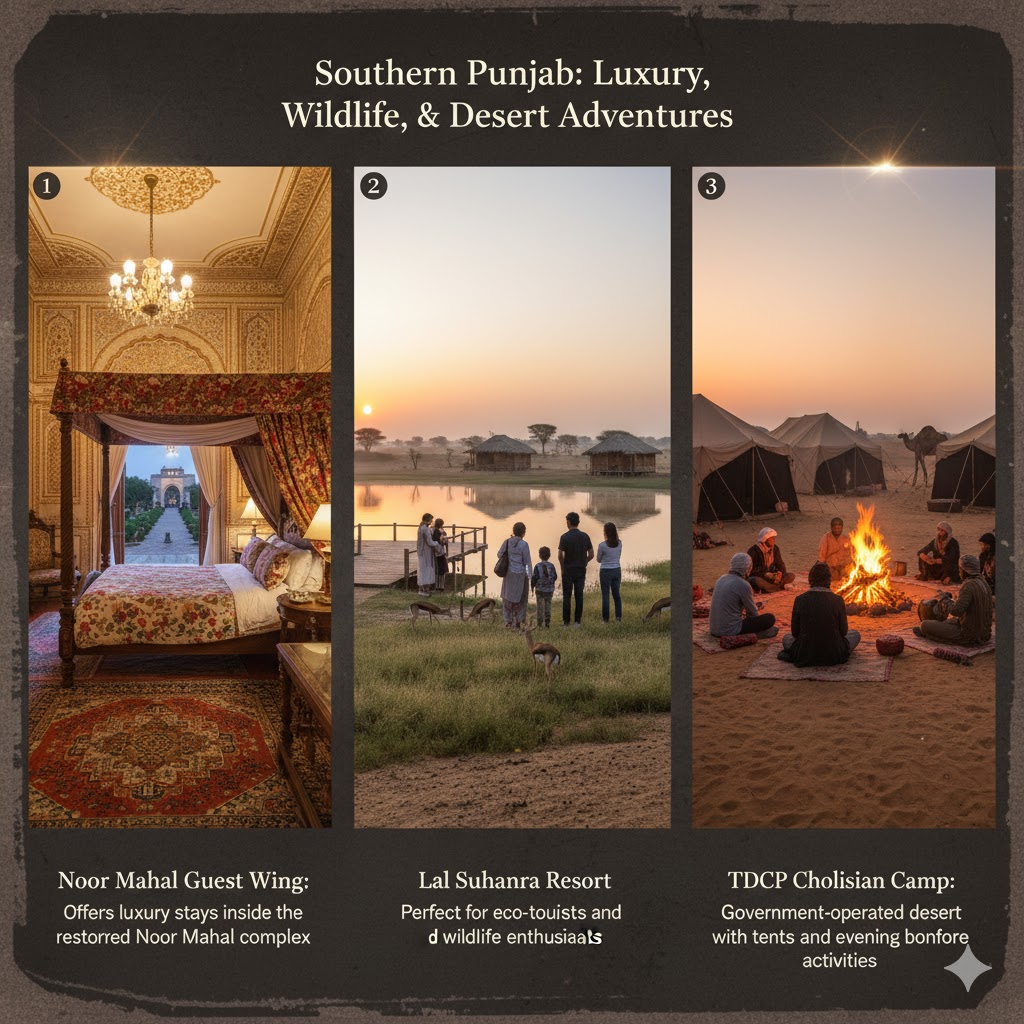
Cholistan Desert Camps
Camping in the Cholistan Desert is a once-in-a-lifetime experience. Star-filled skies, warm bonfires, and cultural performances make nights magical.
Facilities: Traditional meals, live folk dance, camel rides, and security-managed camps.
Local Tips: Carry light blankets; desert nights can get surprisingly cool.
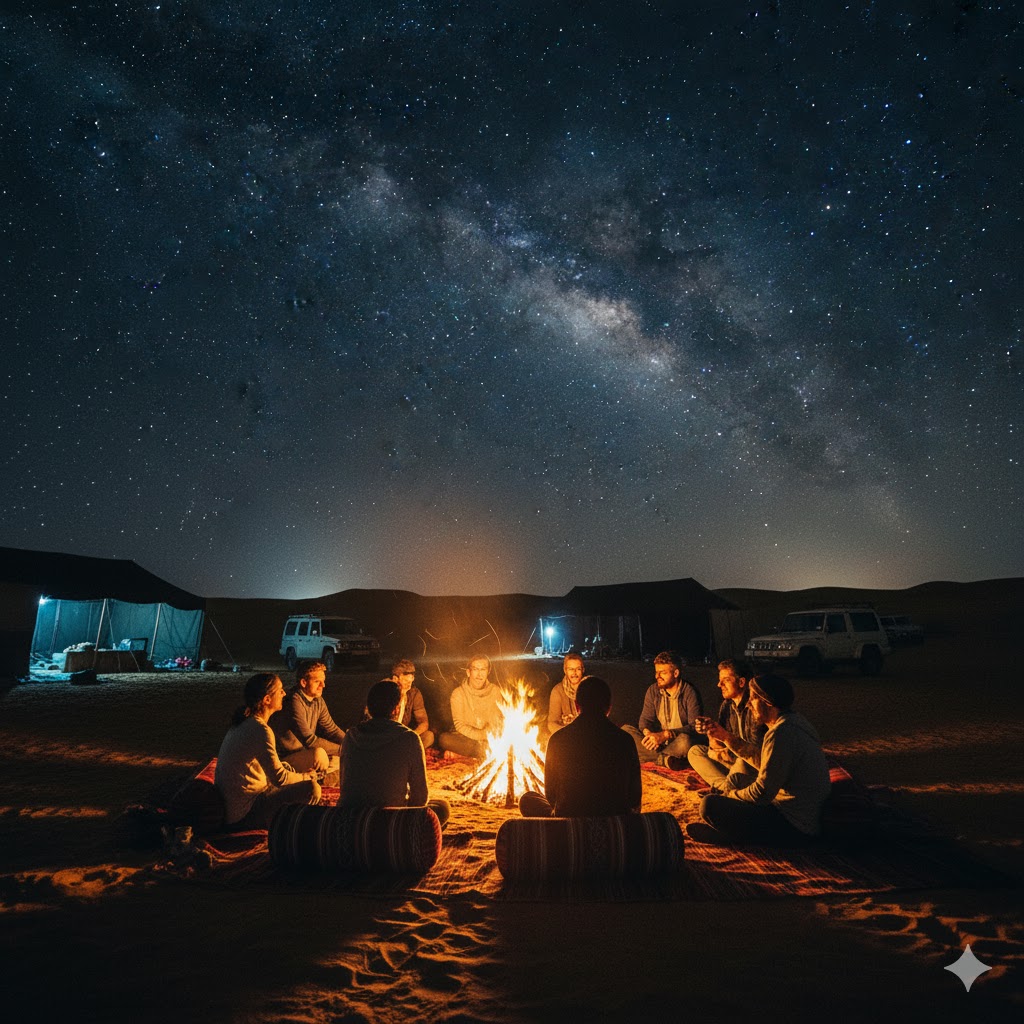
Heritage & Faith Trail of Southern Punjab
11. The Timeless Tomb of Bibi Jawindi – Uch Sharif’s Jewel
The Tomb of Bibi Jawindi stands as a crown jewel of Uch Sharif’s Islamic architecture. Built in the 15th century by an Iranian princess, this octagonal tomb features intricate turquoise and white glazed tiles that shimmer beautifully under the desert sun. Despite partial damage from floods and time, it remains one of Pakistan’s most photographed historical monuments.
Cultural Origin: Represents the Timurid architectural influence that shaped the Multani school of design.
Highlights: Octagonal design, blue glazed tiles, calligraphy panels, and serene atmosphere.
Hidden Gem: Nearby ruins of other saints’ tombs connected through ancient brick pathways.
Local Tips: Visit at golden hour for photography; respect local customs as the site is still revered.
Access Info: A short drive from Uch Sharif’s main bazaar.
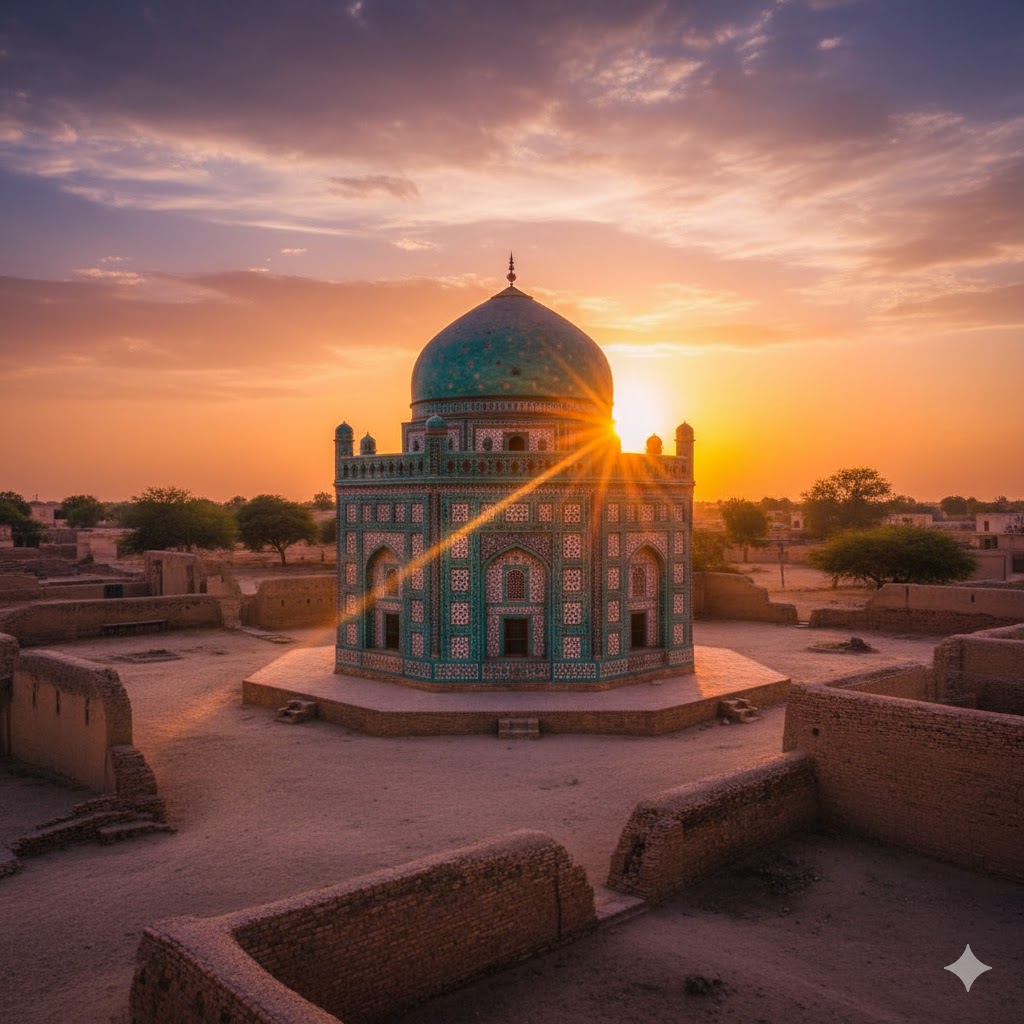
12. Darbar Musa Pak Shaheed – The Lesser-Known Sufi Haven (Multan)
Nestled in the old quarters of Multan, the Darbar of Musa Pak Shaheed offers a quieter, more intimate spiritual experience compared to the city’s main shrines. The complex is adorned with ancient frescoes and hand-painted floral designs that narrate centuries of devotion.
Cultural Note: The saint was known for spreading Islam peacefully through poetry and teaching.
Highlights: Fresco work, quiet prayer areas, and historical manuscripts.
Local Tips: Ideal for those seeking a meditative or photography experience away from the crowds.
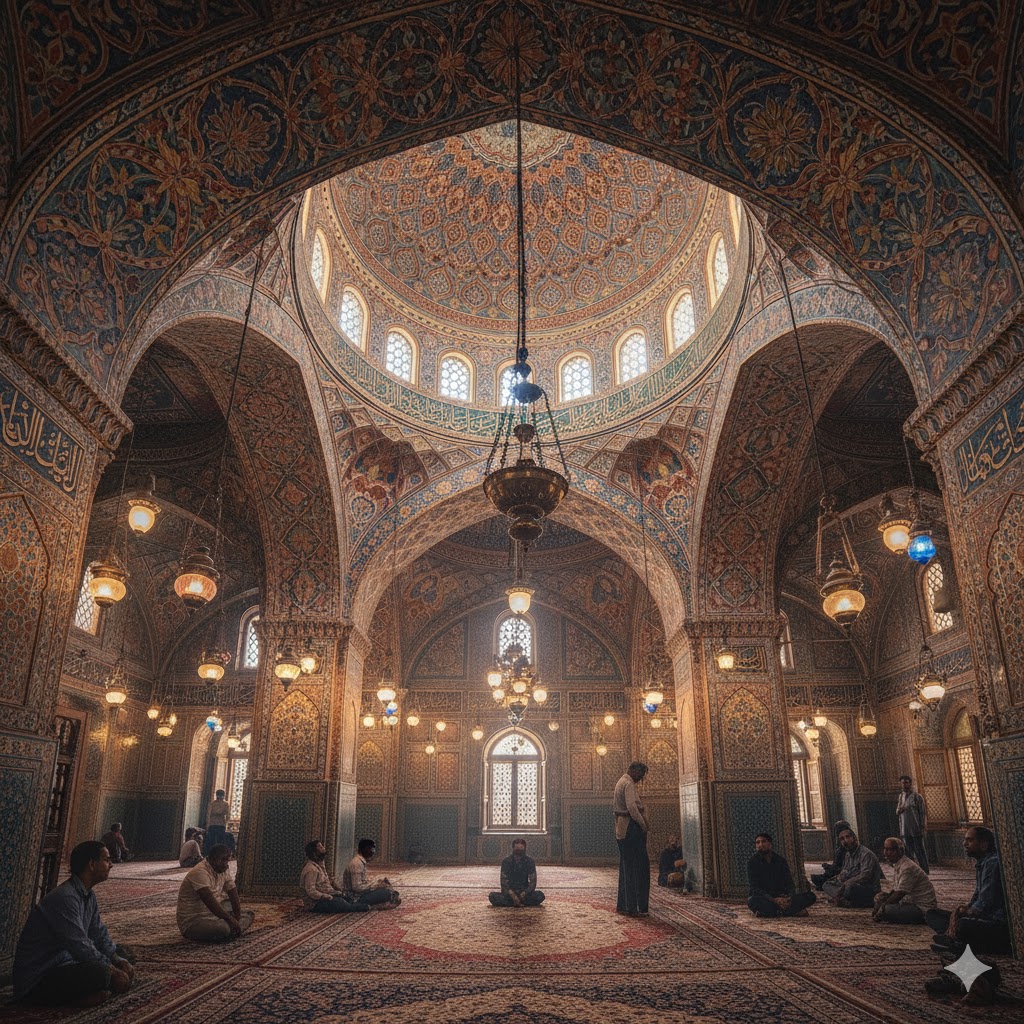
13. Abbasi Mosque – Desert Elegance in White Marble
Located beside Derawar Fort, the Abbasi Mosque is one of Southern Punjab’s most majestic yet under-visited gems. Built by Nawab Bahawal Khan in 1849, it features flawless white marble domes and graceful arches inspired by Delhi’s Jama Masjid. The mosque stands in sharp contrast to the golden dunes surrounding it — a symbol of purity and royal devotion.
Highlights: White marble façade, geometric tile work, and peaceful surroundings.
Hidden Gem: Sunset reflections of the mosque against the desert horizon create cinematic imagery.
Access Info: Easily accessible from Derawar Fort during Cholistan tours.
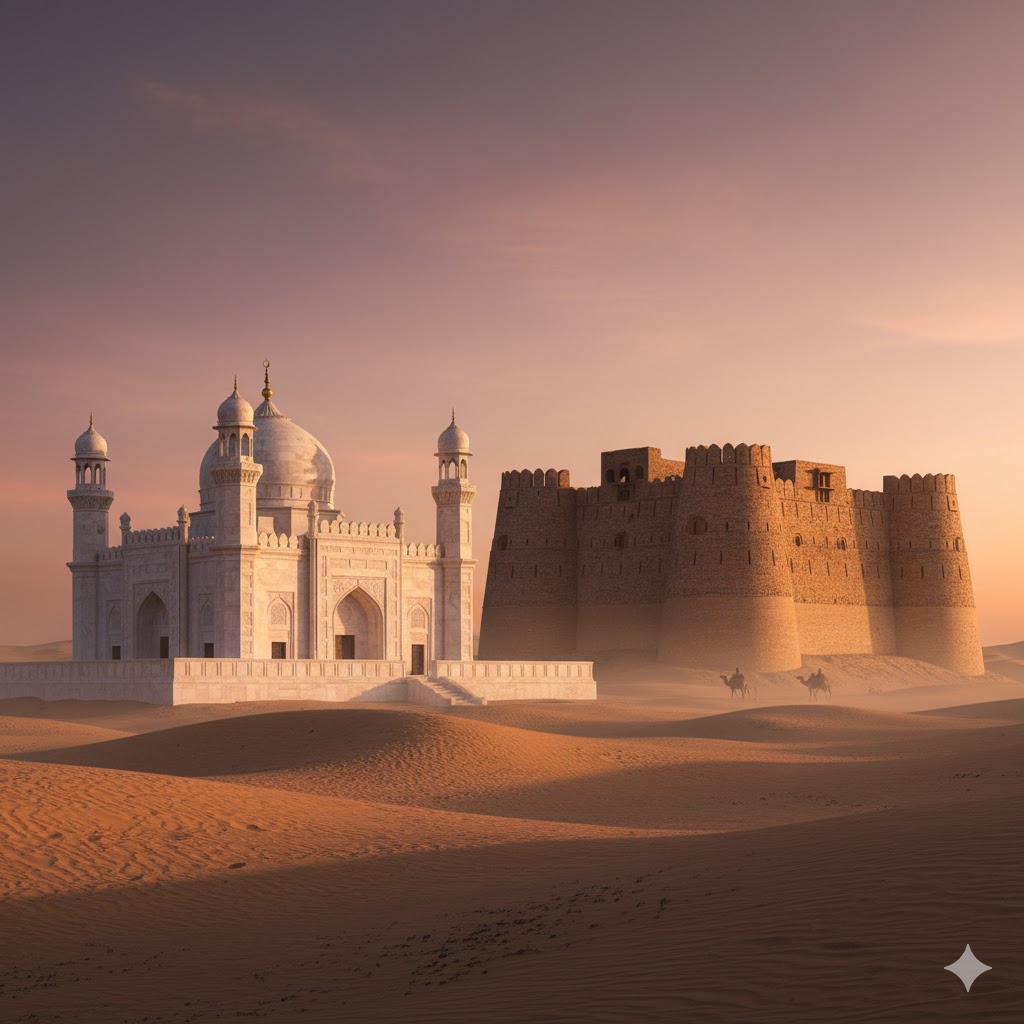
14. Sadiq Garh Palace – The Forgotten Royal Marvel
The Sadiq Garh Palace in Ahmadpur East once served as the luxurious residence of the Bahawalpur Nawabs. Built in 1882, this massive structure features domed towers, lush gardens, and detailed European-inspired interiors. Though currently undergoing partial restoration, it remains a striking reminder of Bahawalpur’s princely past.
Hidden Gem: Locals often share stories of royal banquets and secret passages within the palace.
Local Tips: Entry may require permission; contact local tourism authorities in advance.
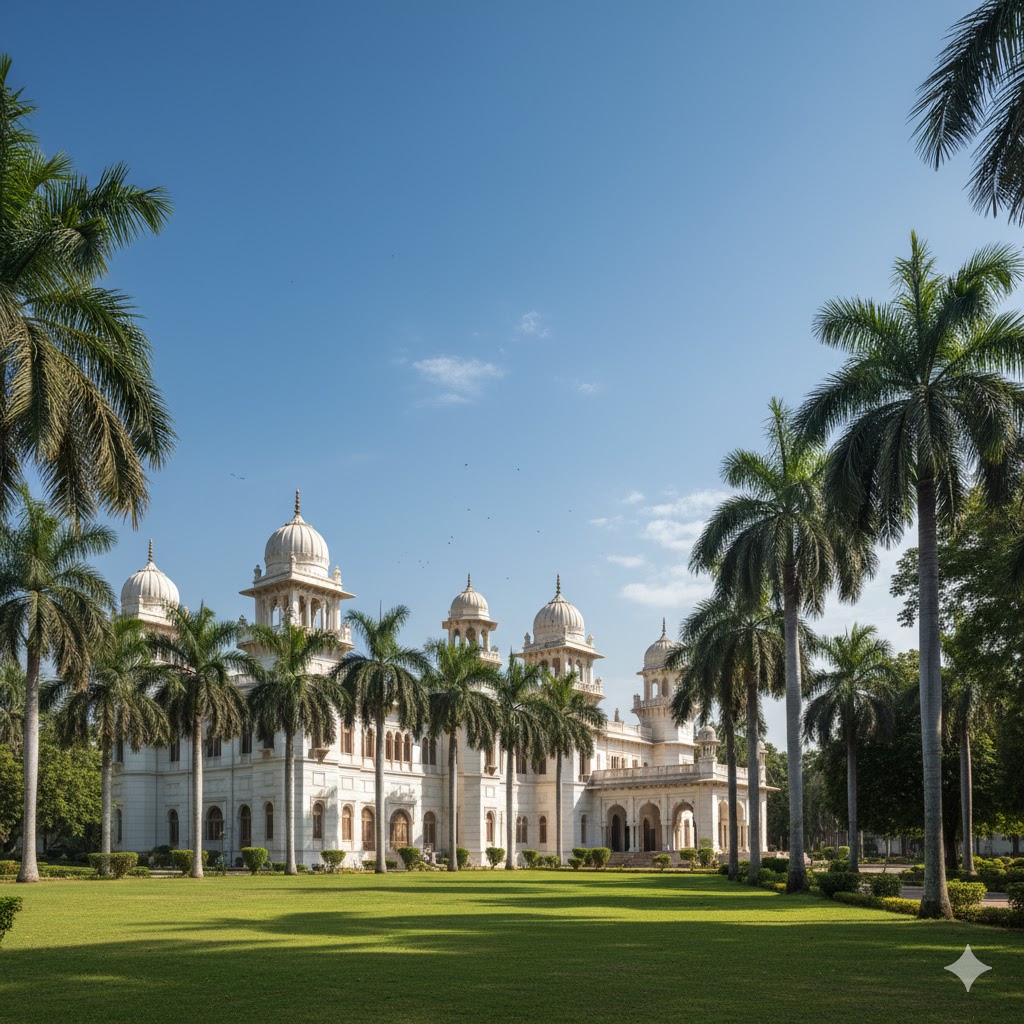
15. Bahawalpur Library & Central Museum – The Intellectual Legacy
Founded in 1924, the Bahawalpur Central Library is one of Pakistan’s most beautiful colonial-era buildings, housing rare manuscripts, maps, and documents from the Nawab’s time. Adjacent to it, the Bahawalpur Museum offers insights into the region’s royal and cultural evolution through jewelry, weaponry, and traditional costumes.
Highlights: Mughal-era manuscripts, royal portraits, and archaeological artifacts.
Local Tips: Photography is allowed in certain sections; inquire at the front desk.
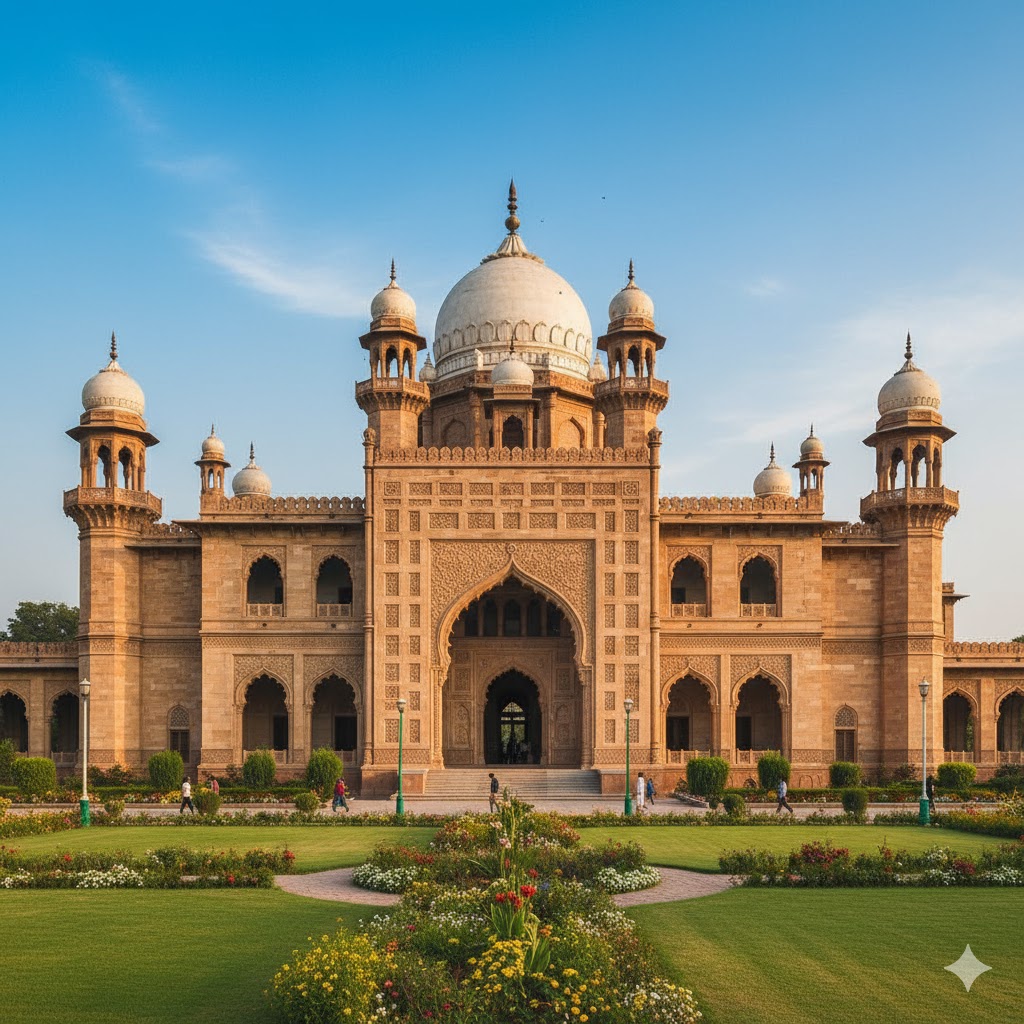
16. Bahawalpur Horse & Cattle Show – Spirit of the Land
Held annually at Bahawalpur Stadium, the Horse & Cattle Show celebrates Punjab’s rural traditions through livestock parades, folk dances, and equestrian displays. It’s a vivid cultural immersion for travelers eager to experience authentic Punjabi village life.
Cultural Origin: Rooted in Nawabi-era agricultural fairs promoting trade and unity.
Highlights: Camel dancing, horse racing, artisan stalls, and musical nights.
Local Tips: Best time to attend is February or March; carry cash for local crafts and snacks.
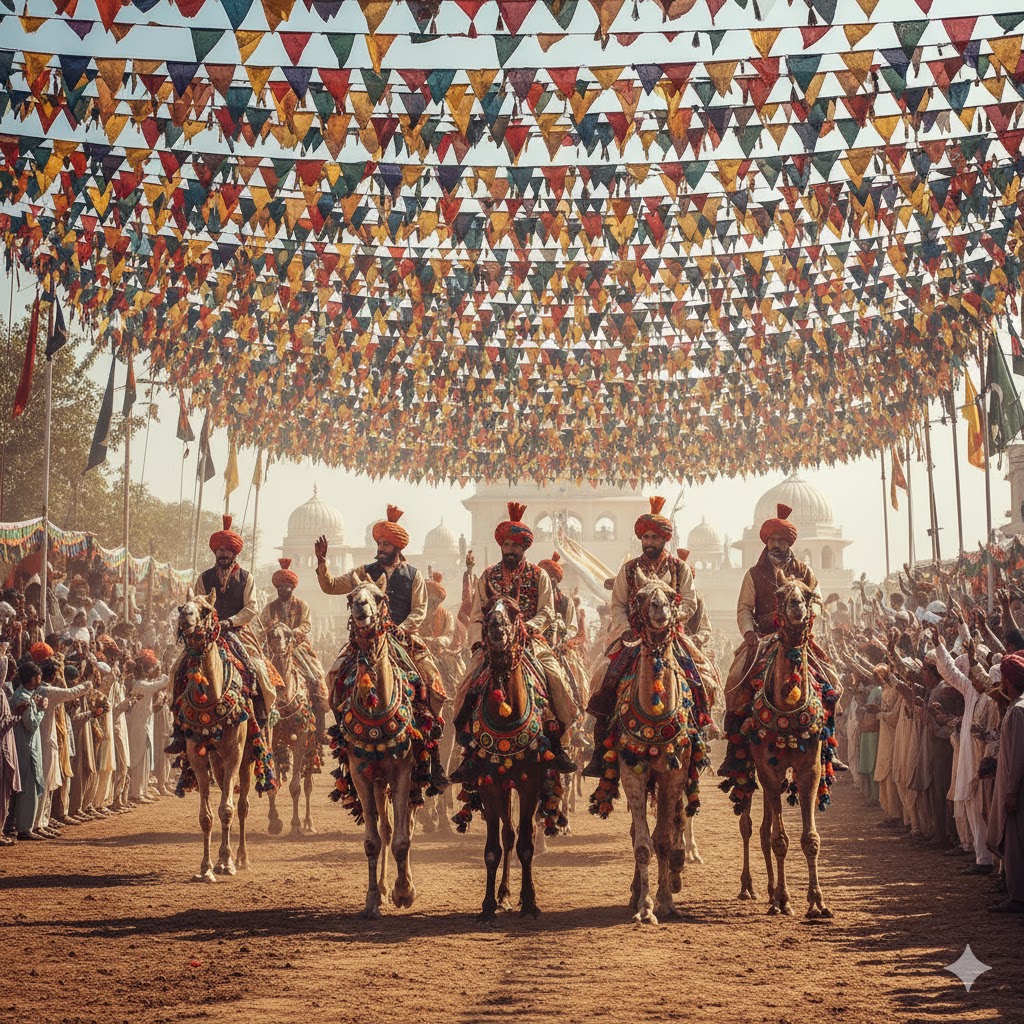
17. Multan Mango Festival – Sweet Summer Celebration
Every summer, Multan — Pakistan’s “City of Mangoes” — hosts the Mango Festival, drawing growers and tourists alike. Stalls overflow with varieties like Chaunsa, Anwar Ratol, and Sindhri, while music, food, and competitions fill the city’s parks.
Highlights: Mango tasting events, folk performances, and horticulture exhibitions.
Local Tips: Visit in June or July; carry a small cooler bag if buying mangoes for travel.
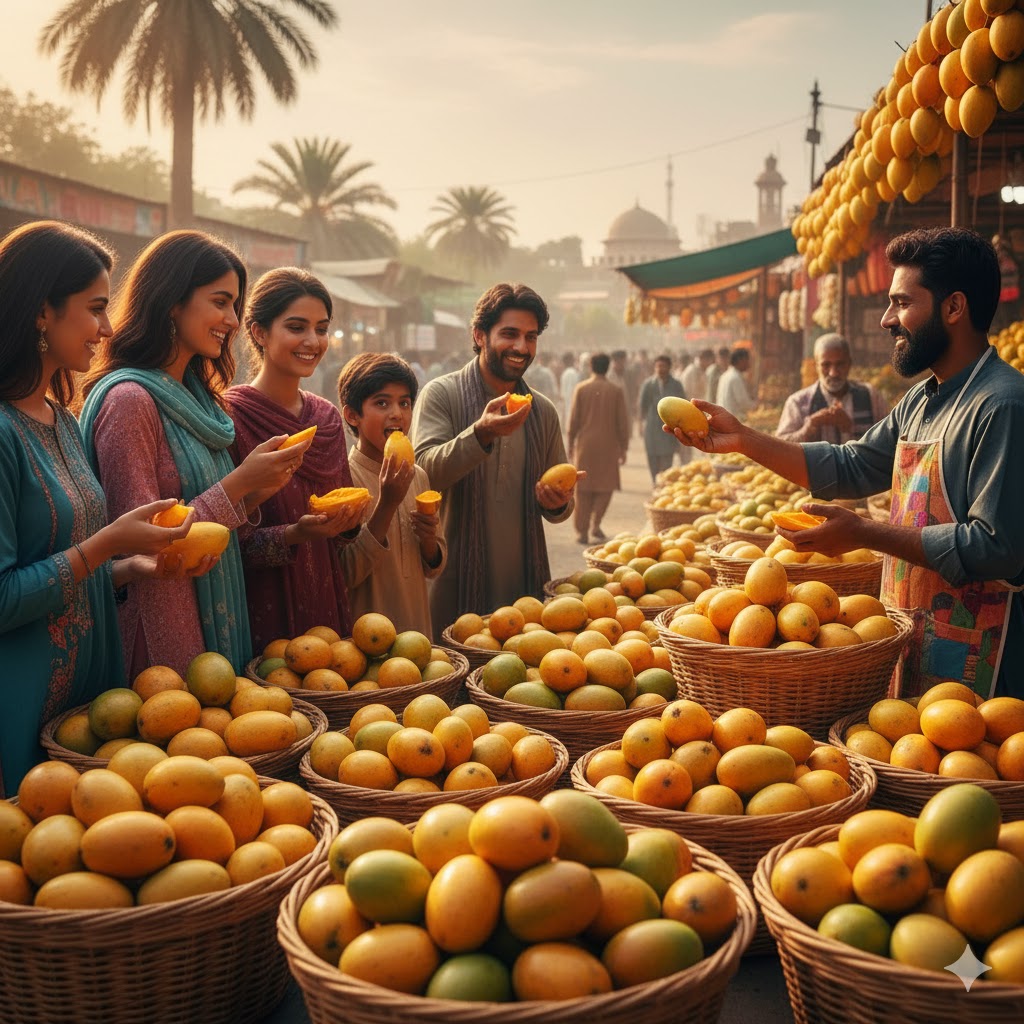
18. Multan Arts Council – Where Tradition Meets Modern Expression
The Multan Arts Council is the cultural heartbeat of the city, organizing exhibitions, poetry recitals, and performing arts shows that celebrate Punjab’s evolving creativity. The building itself blends contemporary design with regional motifs.
Highlights: Saraiki poetry nights, classical dance performances, and handicraft exhibitions.
Hidden Gem: Annual Sufi Art Exhibition in spring, showcasing fusion artwork by young local artists.
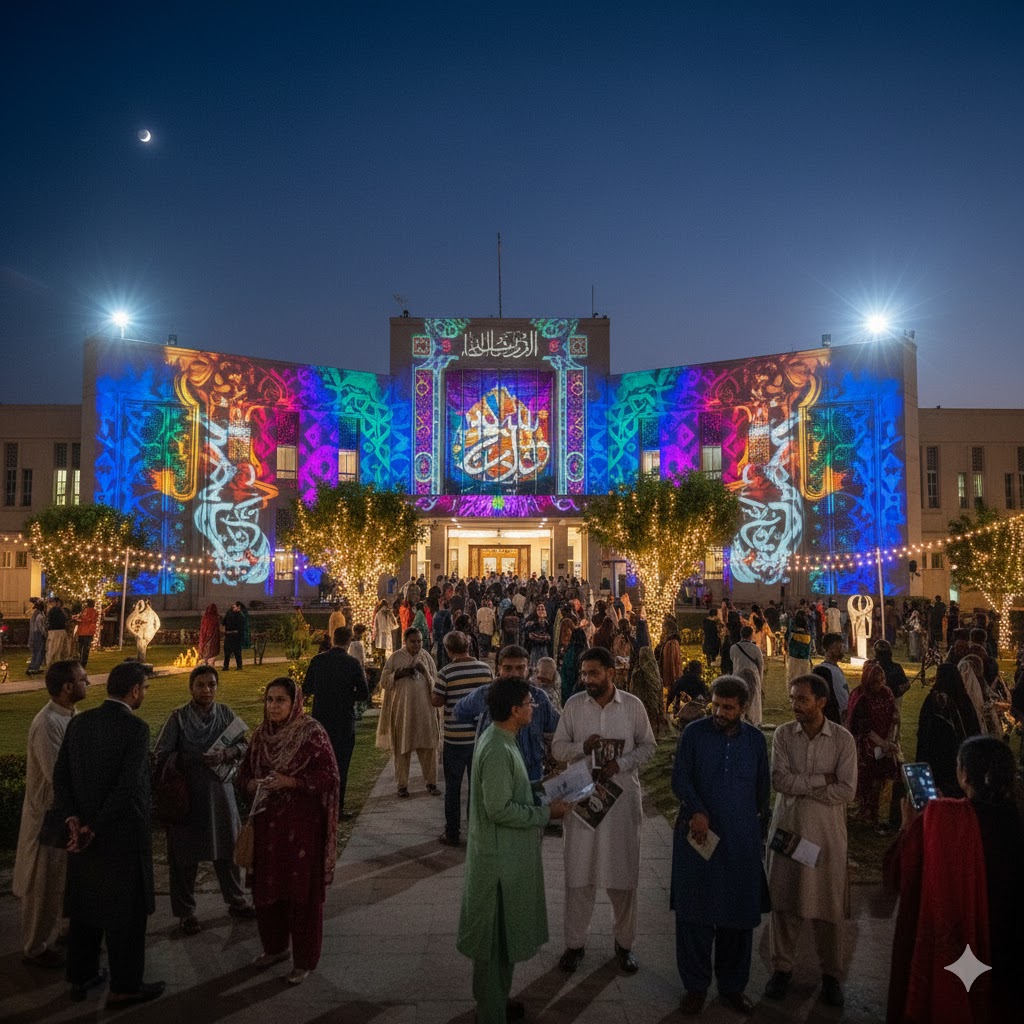
19. Faith & Diversity in Southern Punjab
Southern Punjab is a land of pluralism where different faiths coexist peacefully, reflecting Pakistan’s multicultural roots.
Mandir of Prahladpuri (Multan)
One of the oldest Hindu temples in South Asia, the Mandir of Prahladpuri dates back to ancient Hindu mythology. The temple marks the birthplace of Prahlad and stands near the old Multan Fort area, symbolizing centuries of interfaith harmony.
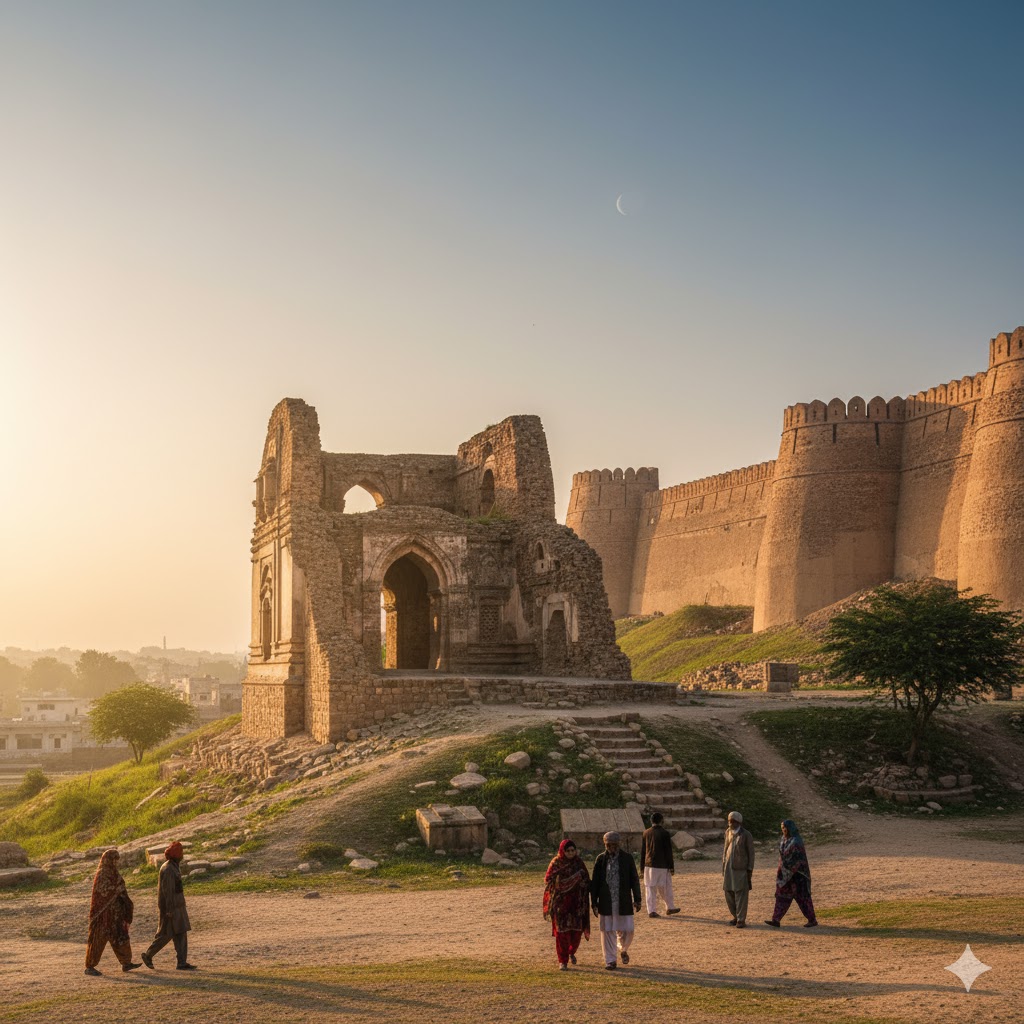
Gurdwara Sahib Bhai Bannu (Bahawalnagar District)
A serene Sikh heritage site surrounded by fields and date palms, Gurdwara Bhai Bannu honors Bhai Bannu, a disciple of Guru Arjan Dev. Pilgrims still visit annually, reinforcing Punjab’s spiritual inclusiveness.
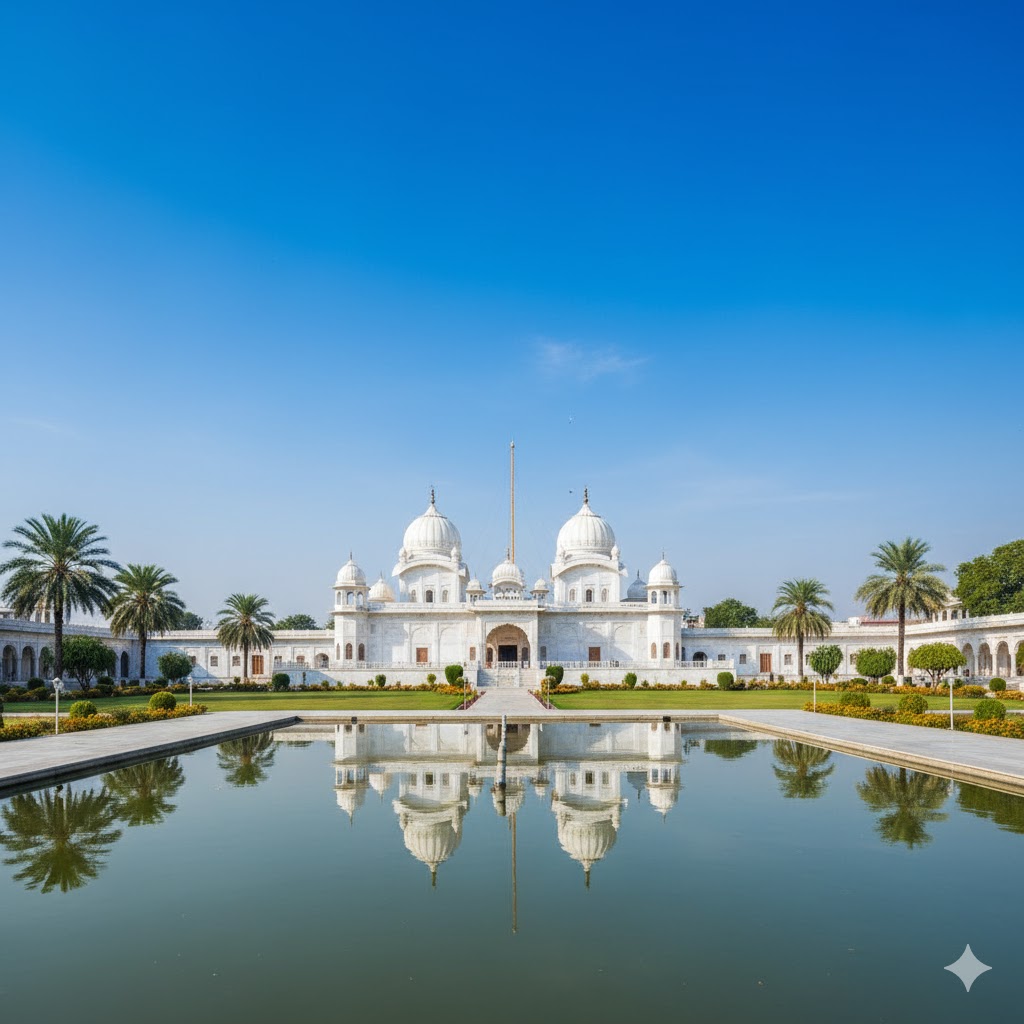
20. Bahawalpur Handicraft Center (TDCP) – Culture in Every Stitch
Run by the Tourism Development Corporation of Punjab, this center curates the finest handicrafts from Bahawalpur, Rahim Yar Khan, and Multan. From embroidered shawls to camel-leather purses, it’s the perfect one-stop shop for cultural souvenirs.
Hidden Gem: Each artisan signs their craft, preserving personal authenticity and cultural identity.
Local Tips: Visit on weekdays to avoid tourist rush and interact directly with artisans.
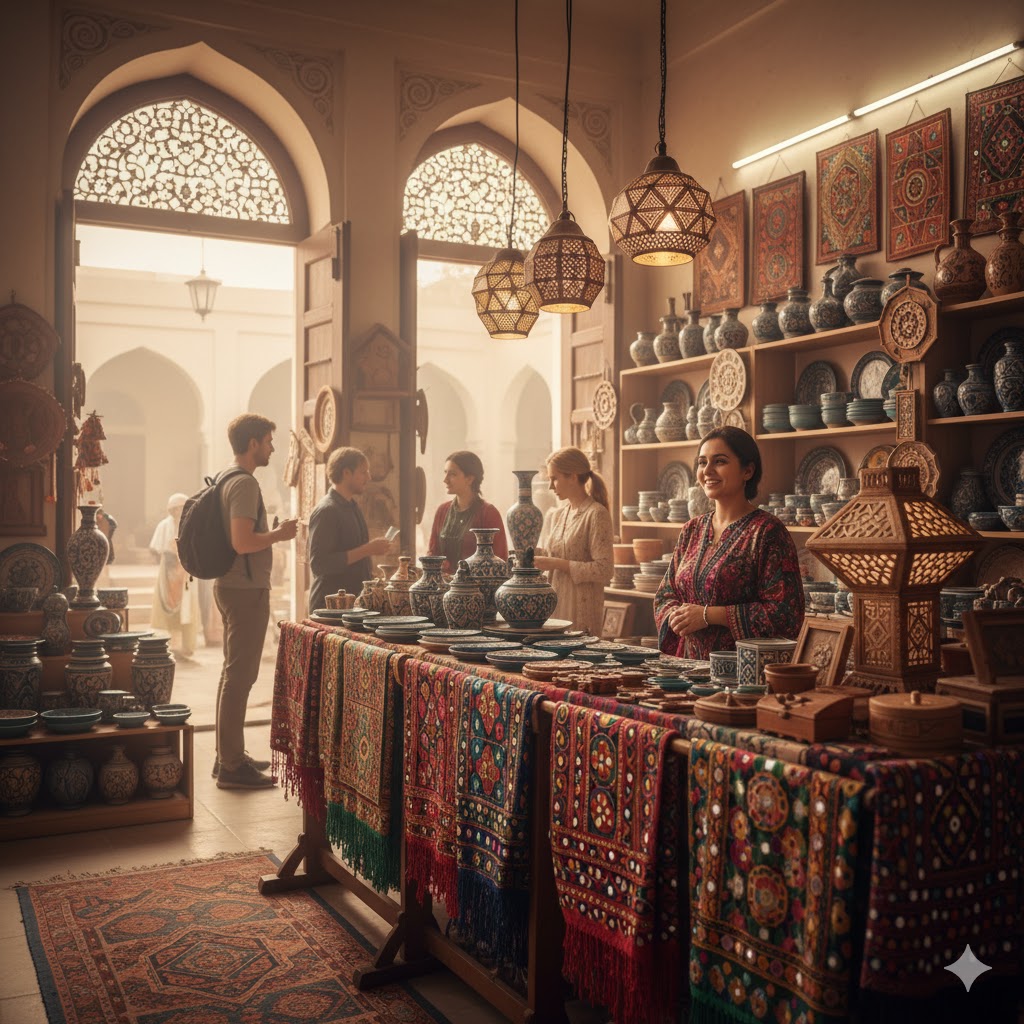
10. FAQs – Southern Punjab Cultural Attractions
Q1: What is the best time to visit Southern Punjab?
The ideal time is October to March, when the weather is pleasant for exploring deserts, forts, and festivals.
Q2: How many days are enough to explore major attractions?
A 5–7 day itinerary covers Multan, Bahawalpur, Uch Sharif, and the Cholistan Desert comfortably.
Q3: Are foreign tourists welcome in shrines?
Yes, but modest dress and respectful behavior are essential. Photography rules vary by shrine.
Q4: What souvenirs should I buy from Southern Punjab?
Authentic Multani pottery, camel leather bags, embroidered shawls, and Sohan Halwa make great keepsakes.
Q5: Is it safe for solo travelers, especially women?
Yes, with basic precautions. Staying in central areas and using verified transport is recommended.
Q6: How can I reach Southern Punjab from Lahore or Islamabad?
Flights to Multan or Bahawalpur, or highway routes via M5 Motorway, are convenient options.
Q7: Are guided tours available for the Cholistan Desert?
Yes, TDCP and local operators offer jeep safaris, camping, and cultural packages during winter months.
Q8: Which festivals should not be missed?
The Urs of Shah Rukn-e-Alam and the Cholistan Jeep Rally are the region’s top cultural experiences.
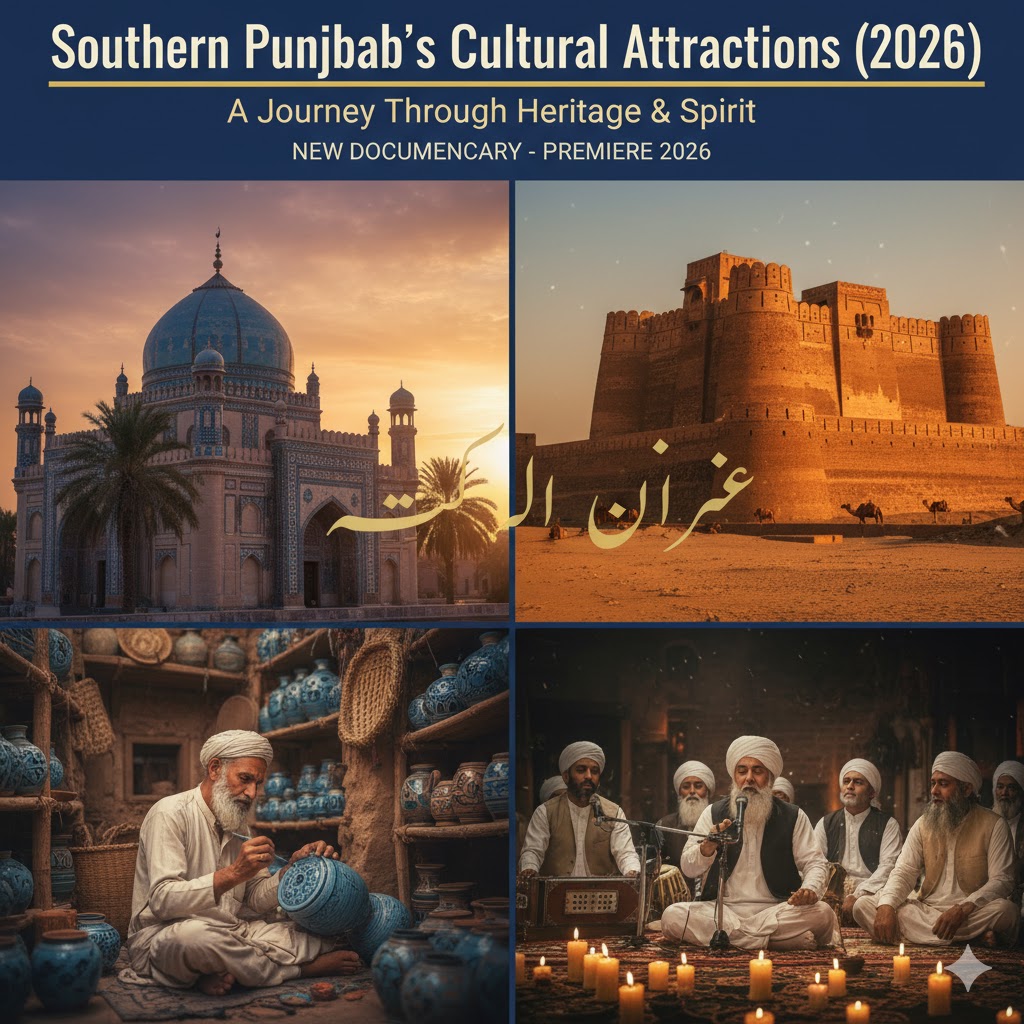
Conclusion – The Soul of the South
Southern Punjab isn’t just a travel destination — it’s a living museum of spirituality, artistry, and royal legacies. Its blend of Sufi warmth, desert majesty, and timeless crafts offers travelers a glimpse of Pakistan’s most soulful heritage. Whether you’re tracing ancient footsteps through Uch Sharif’s shrines or listening to desert rhythms under Bahawalpur’s stars, Southern Punjab promises a journey that touches both heart and history.
Read More:
Lahore Sufi Heritage Walks 2026 Mystic Soul — to connect the royal heritage and palace section.
Hidden Picnic Spots Near Islamabad 2026 Hidden Valleys, Secret Waterfalls — linking the shrine and cultural spirituality content.
Sources:
🌐 Tourism Development Corporation of Punjab (TDCP) — for official travel, handicraft center, and event details.
🌐 UNESCO World Heritage Centre – Uch Sharif (Tentative List) — referencing the globally recognized historical tombs and architecture.

